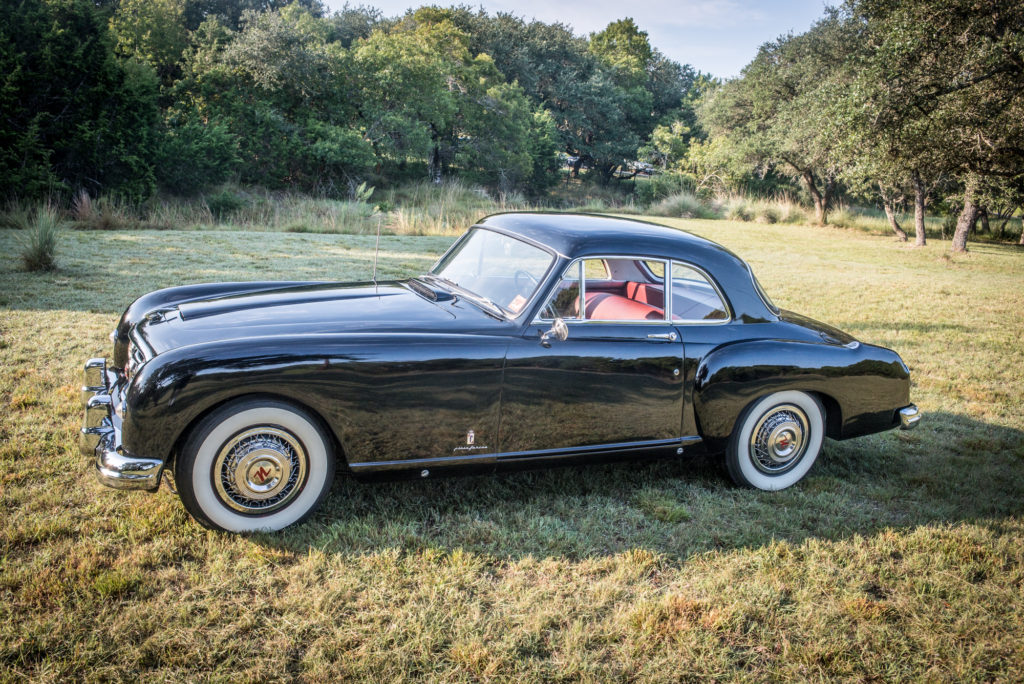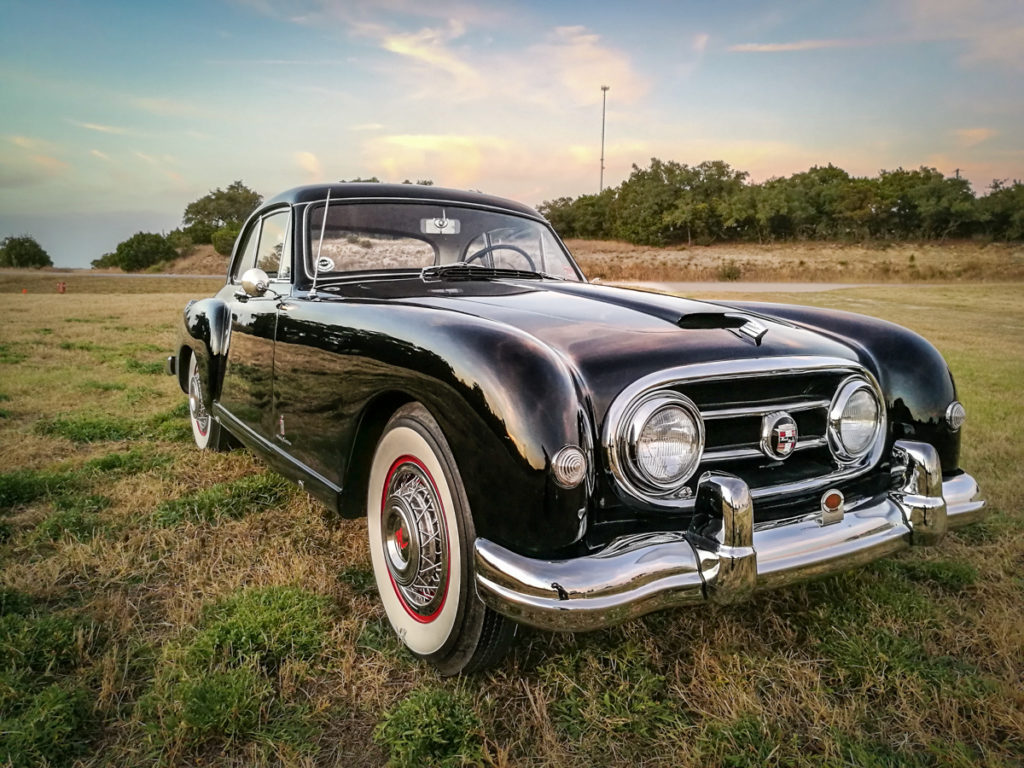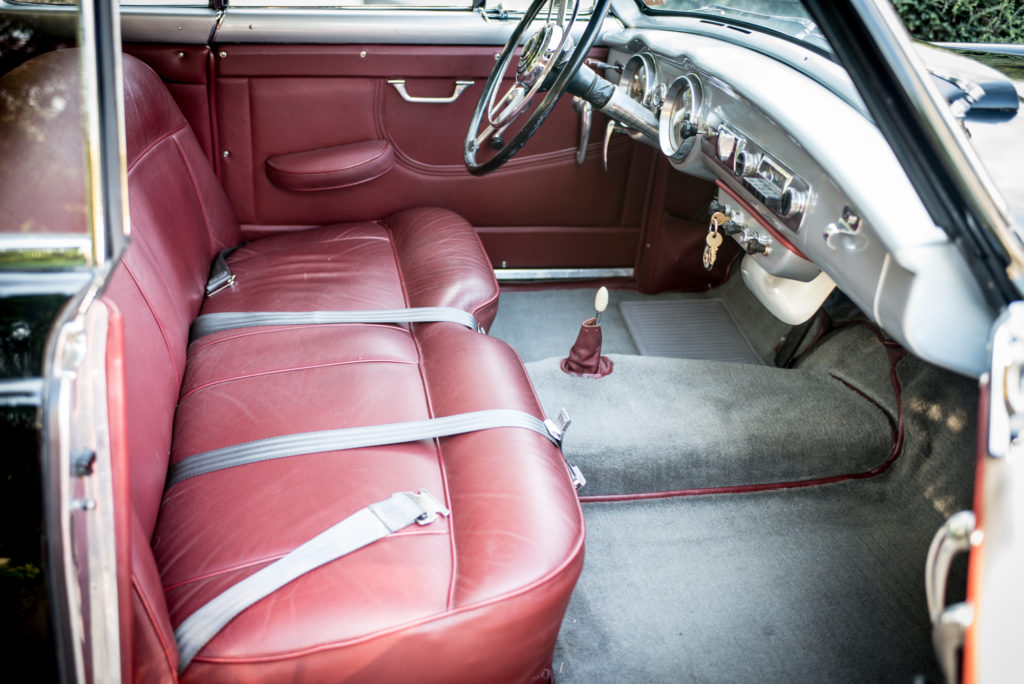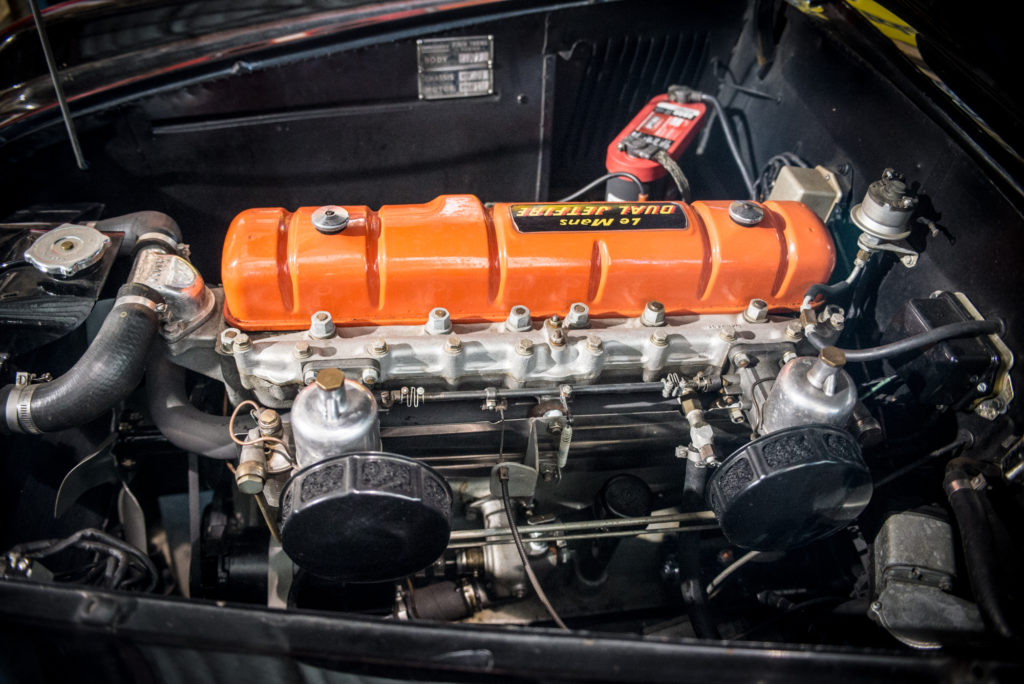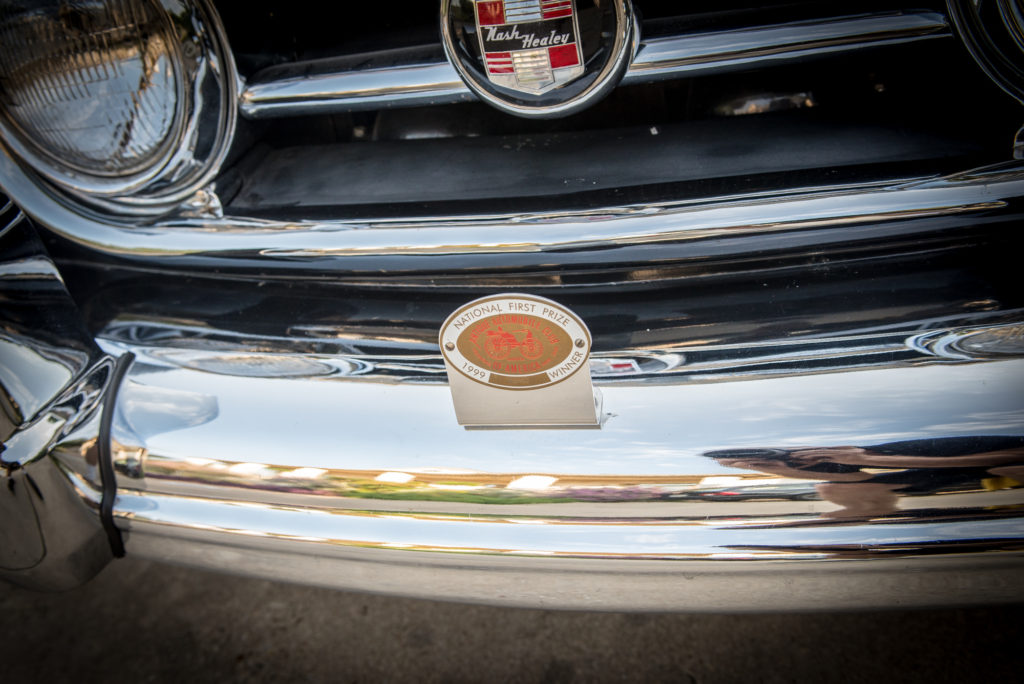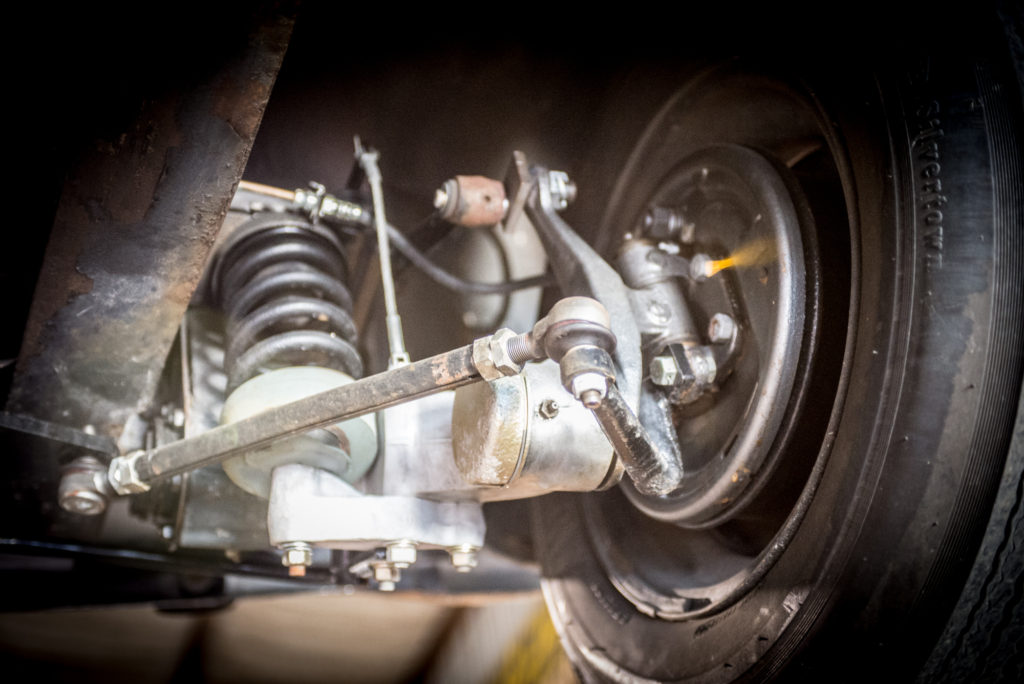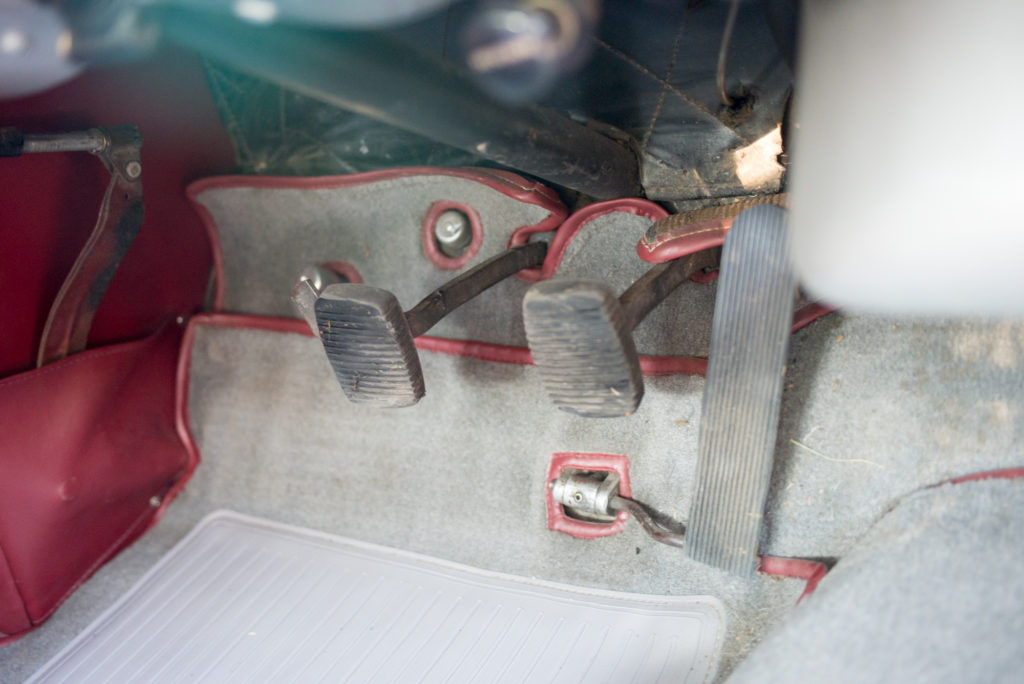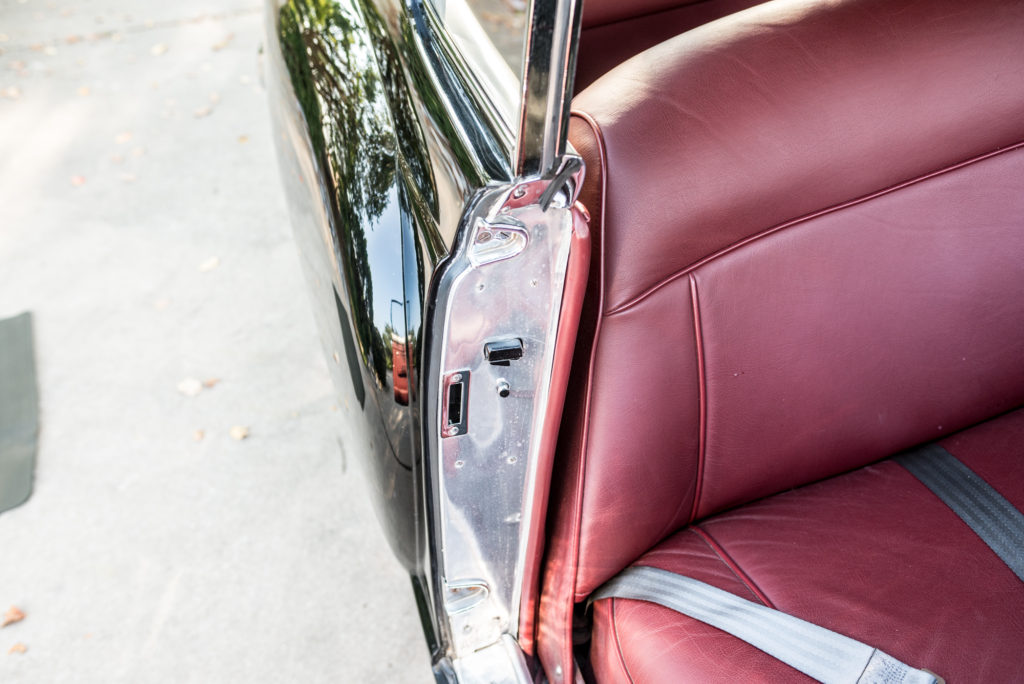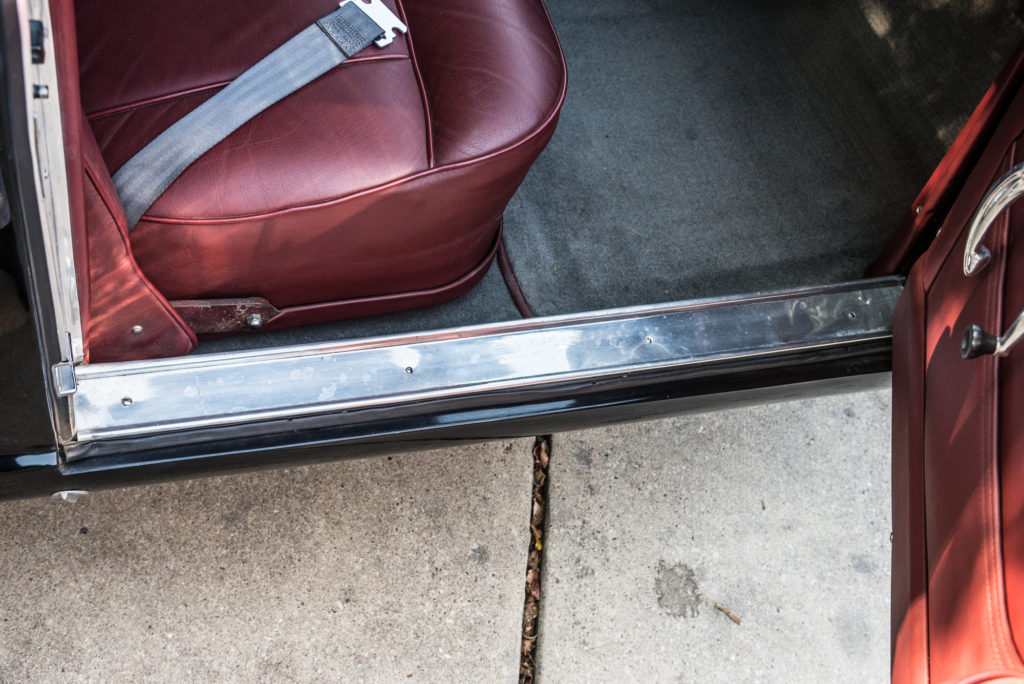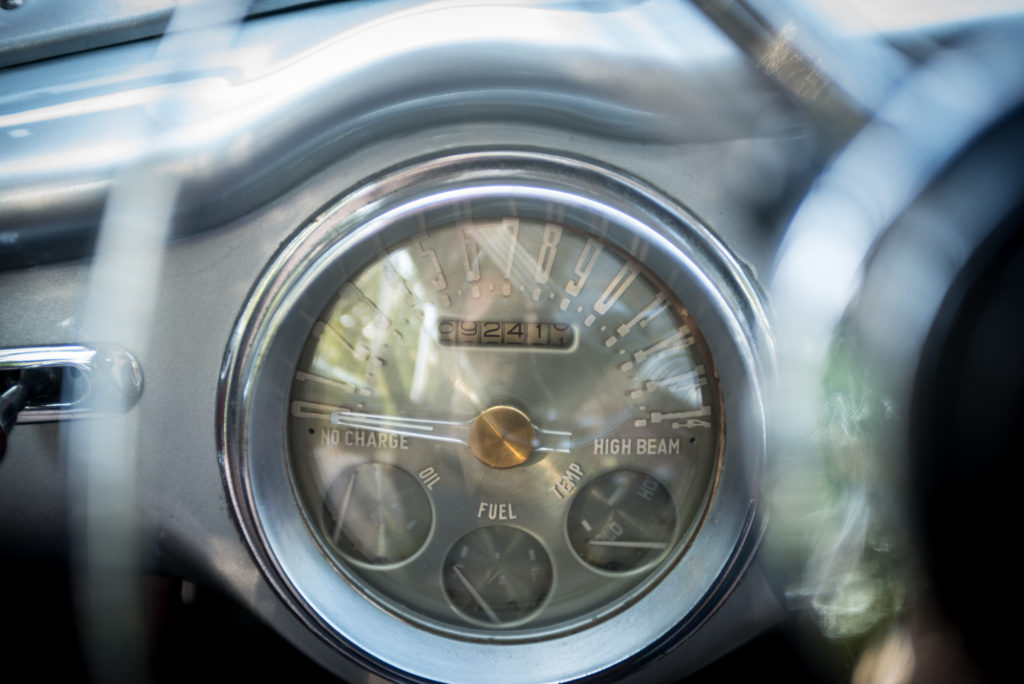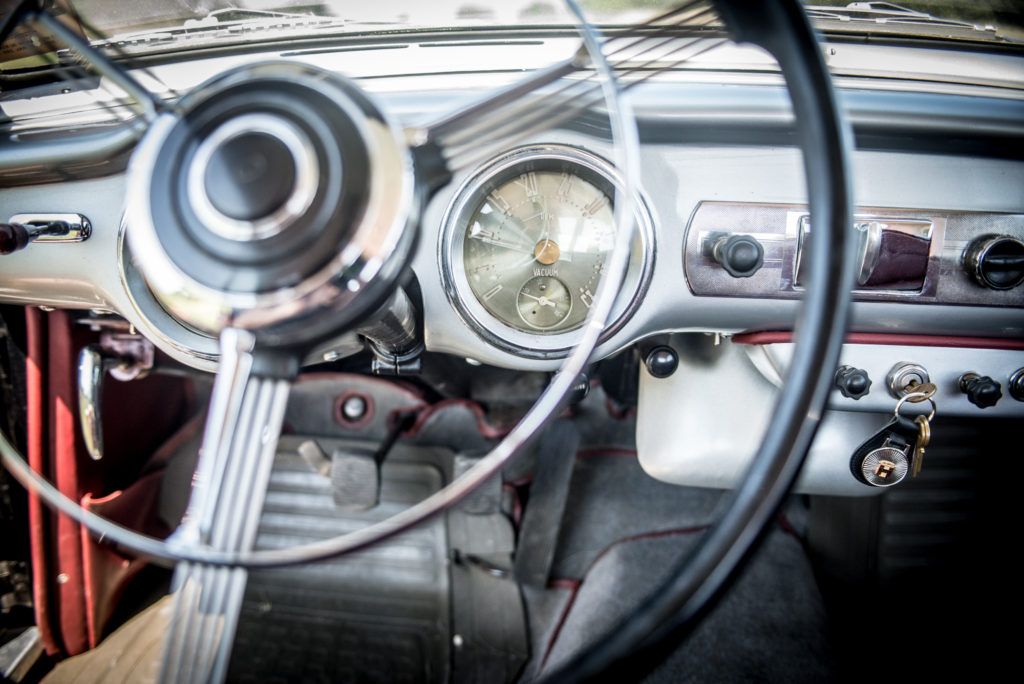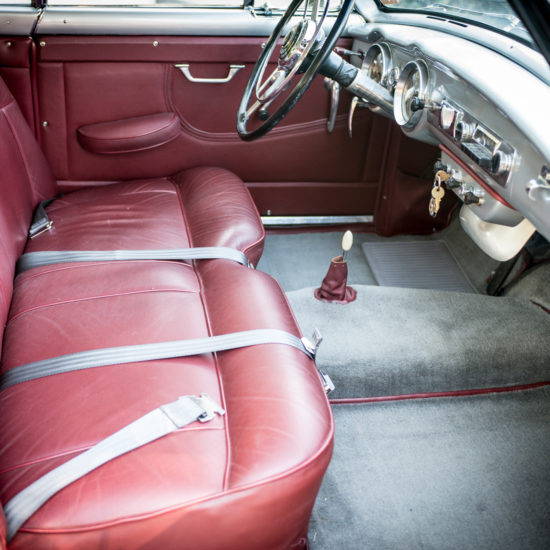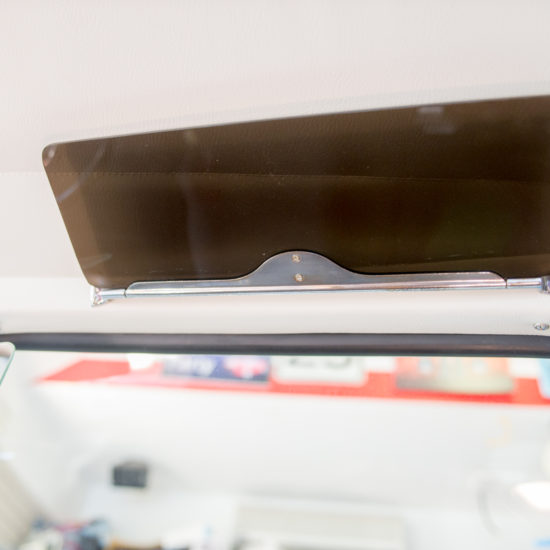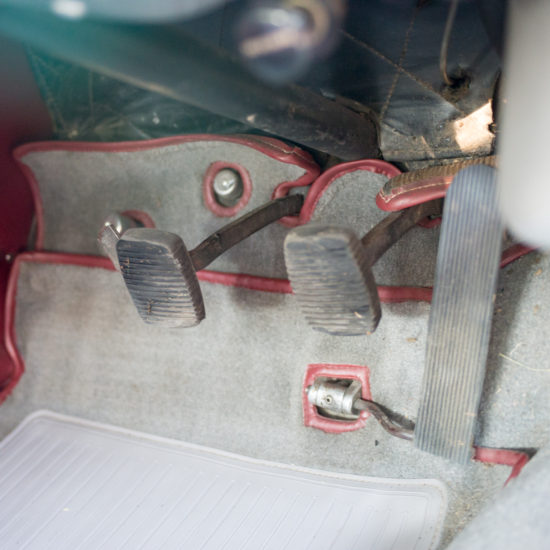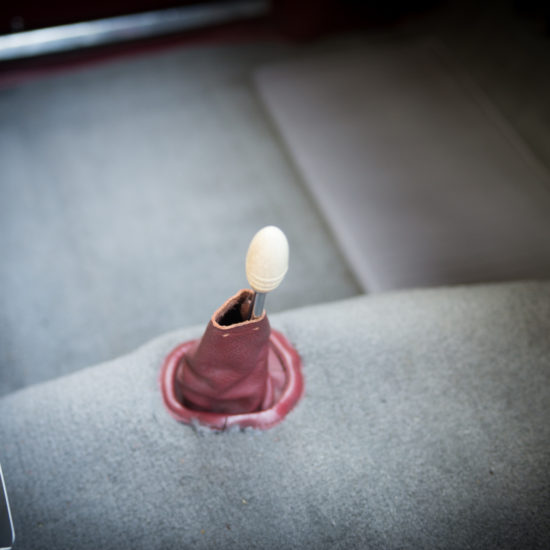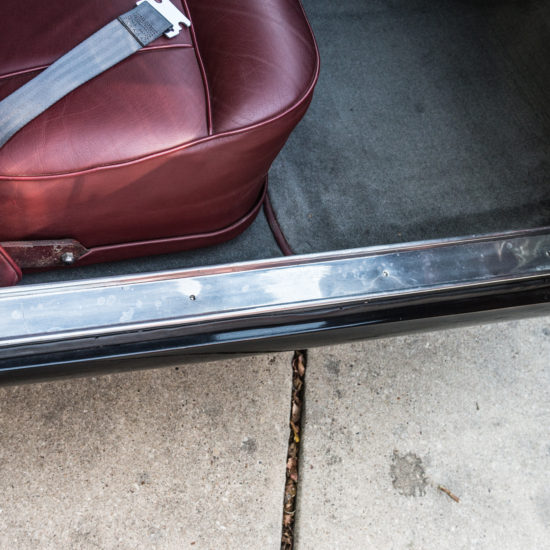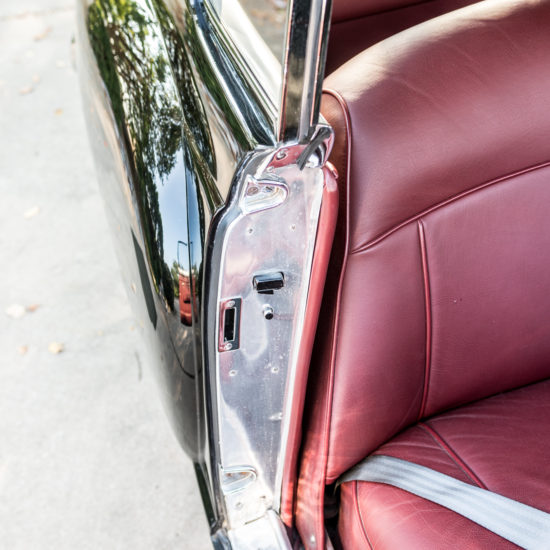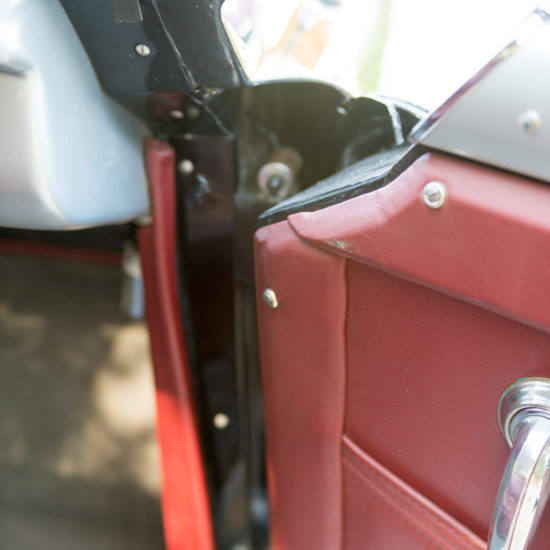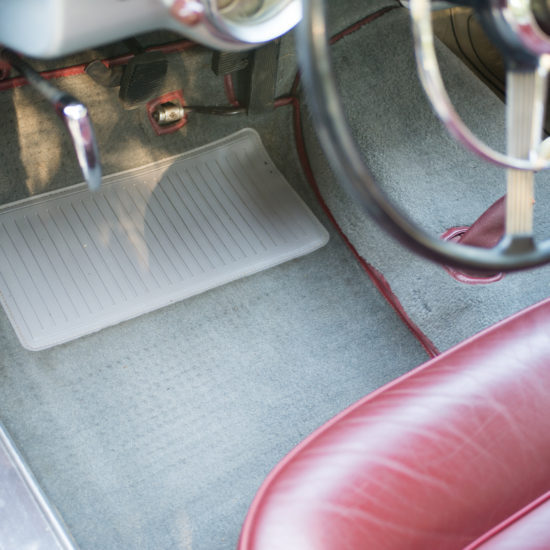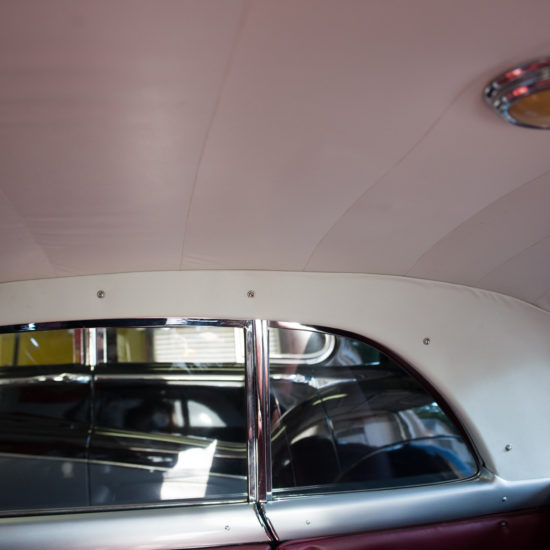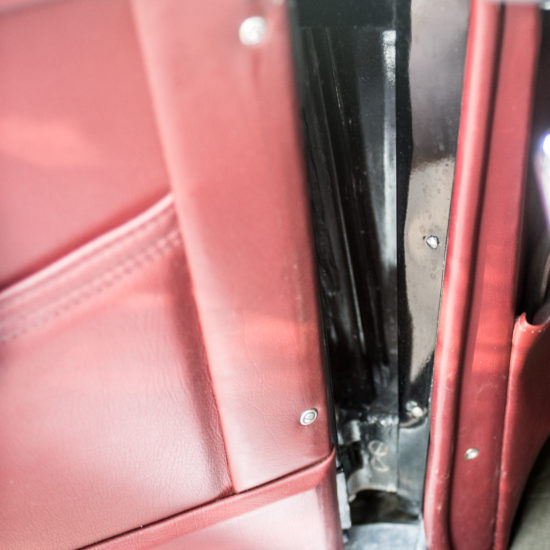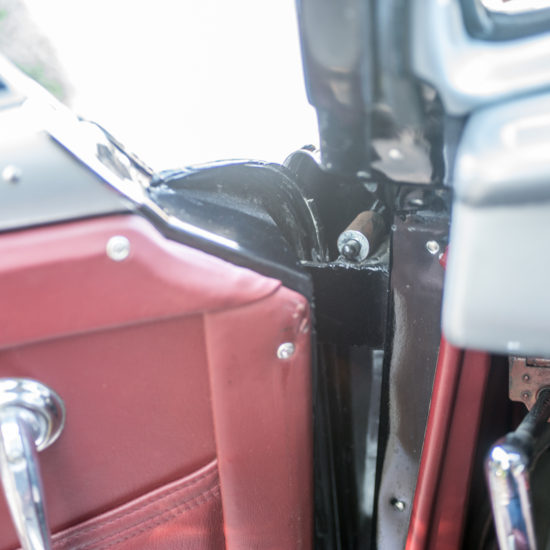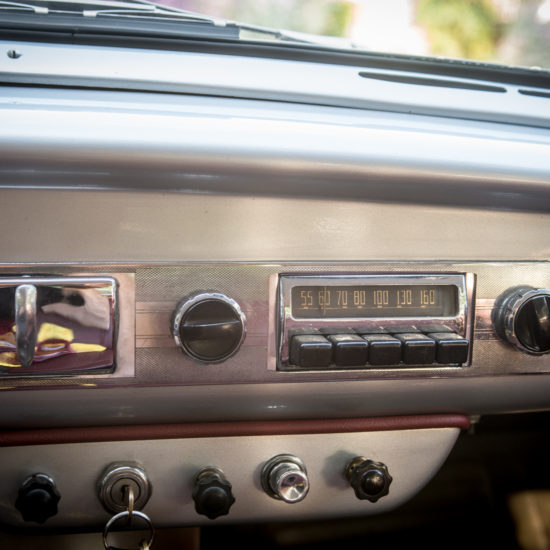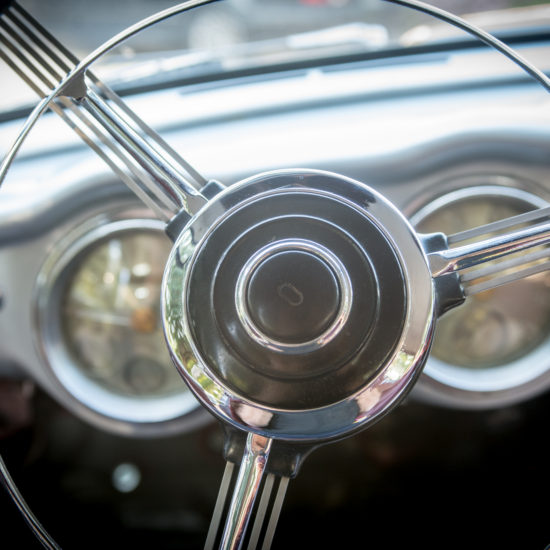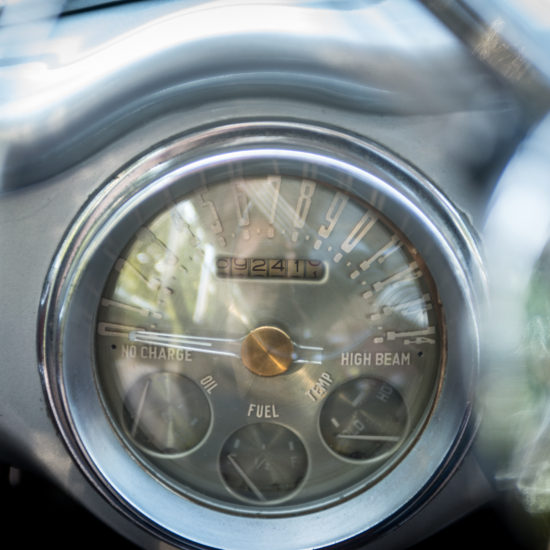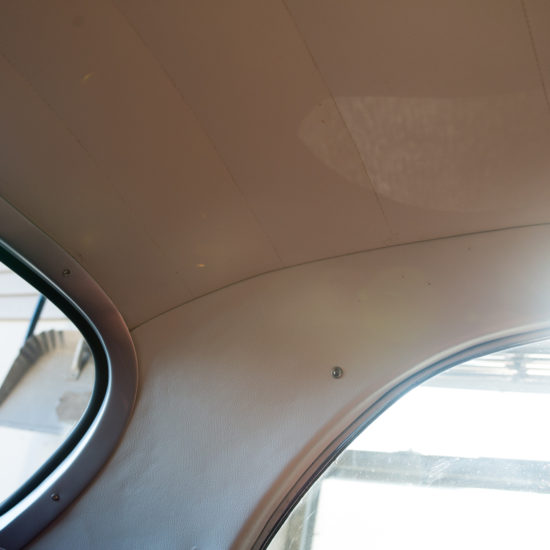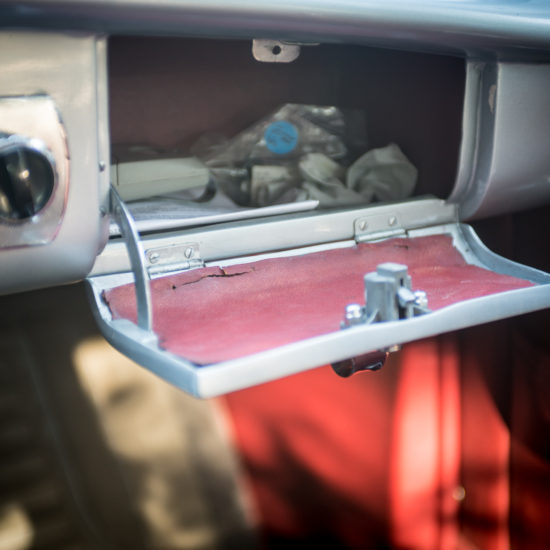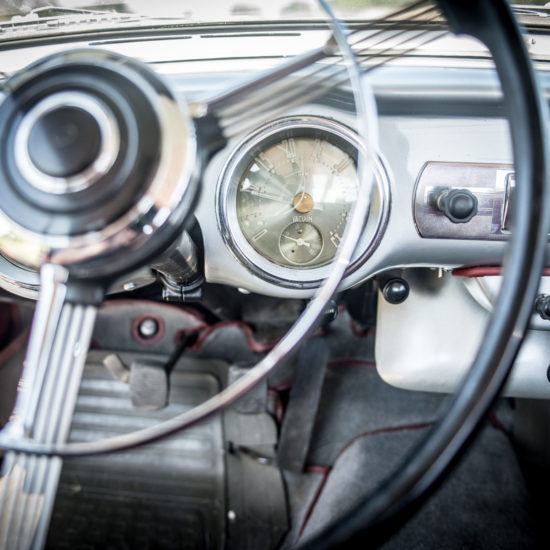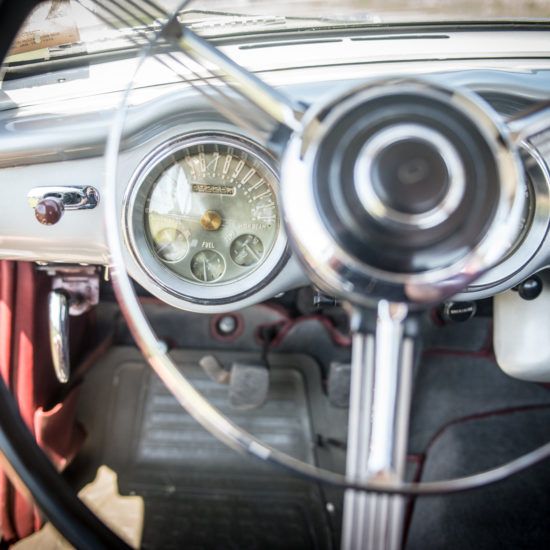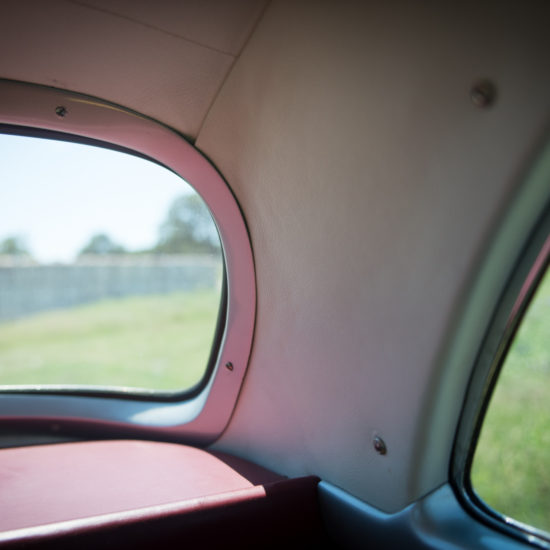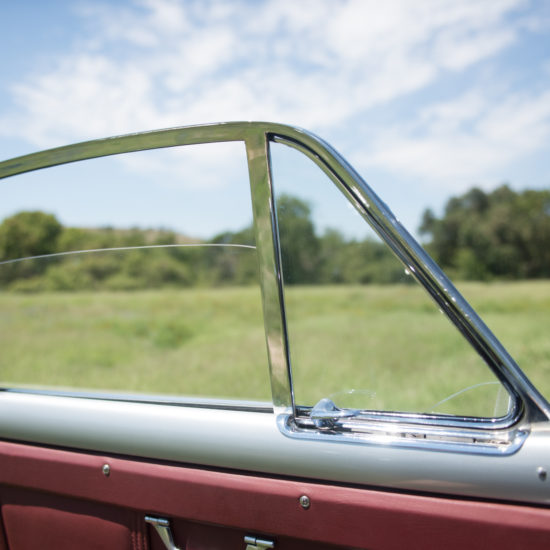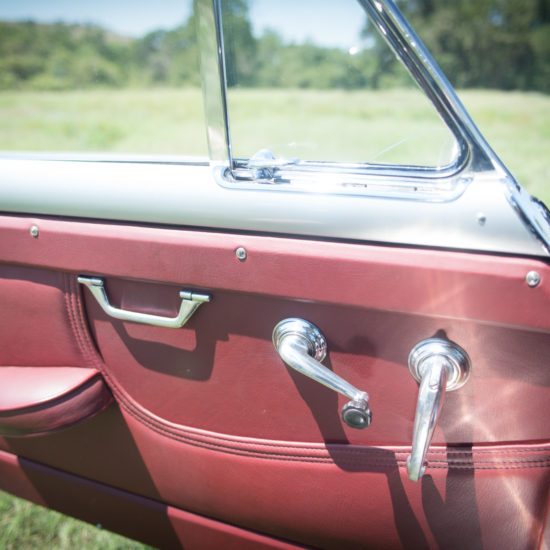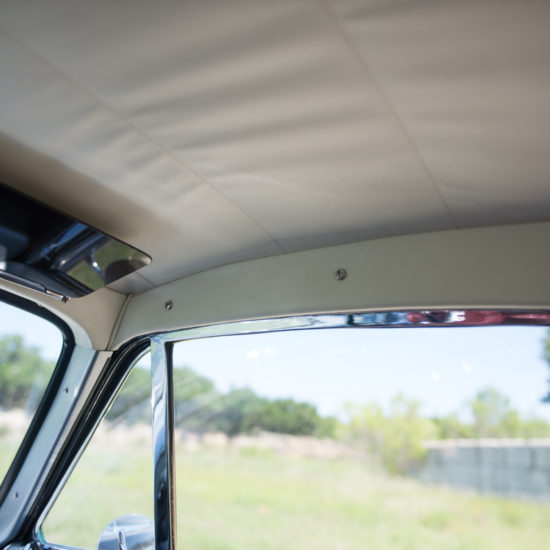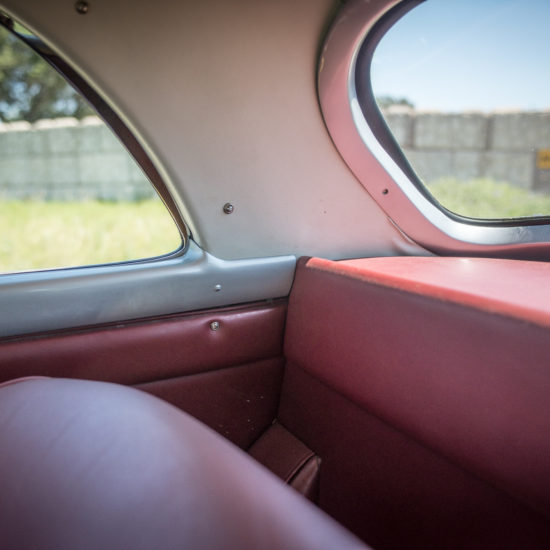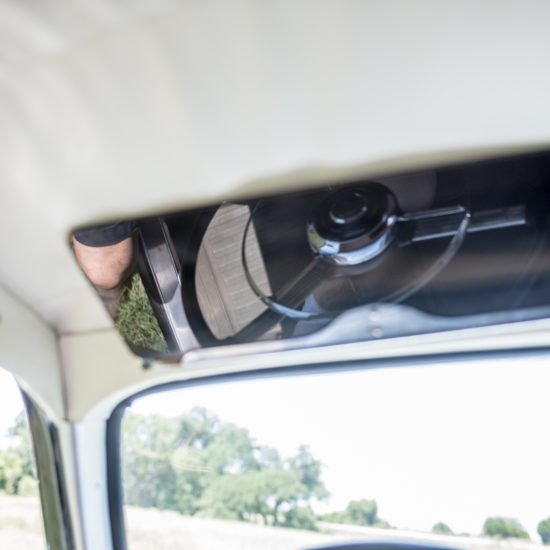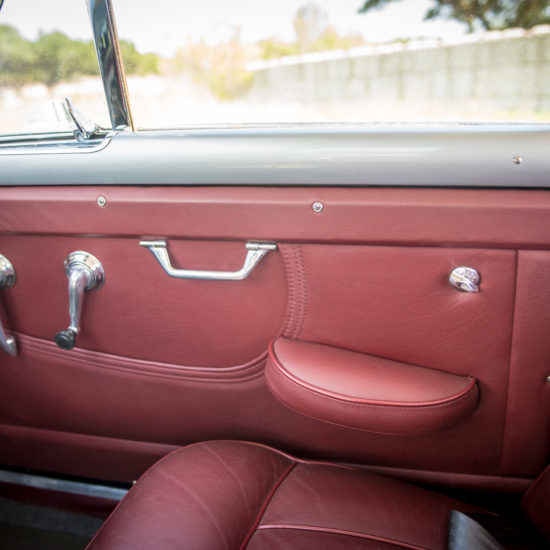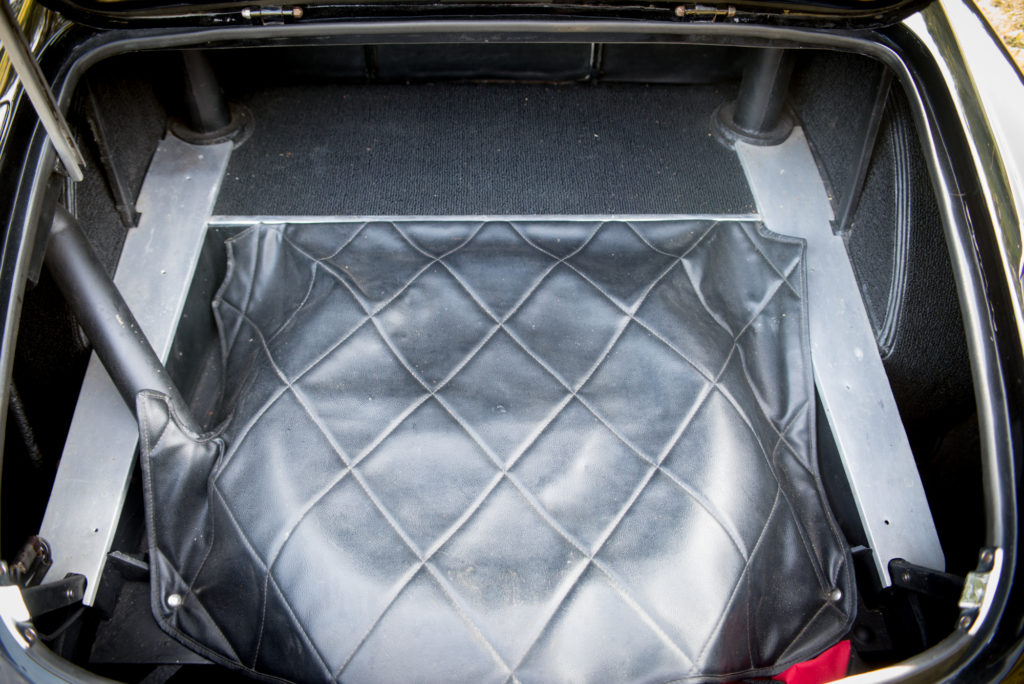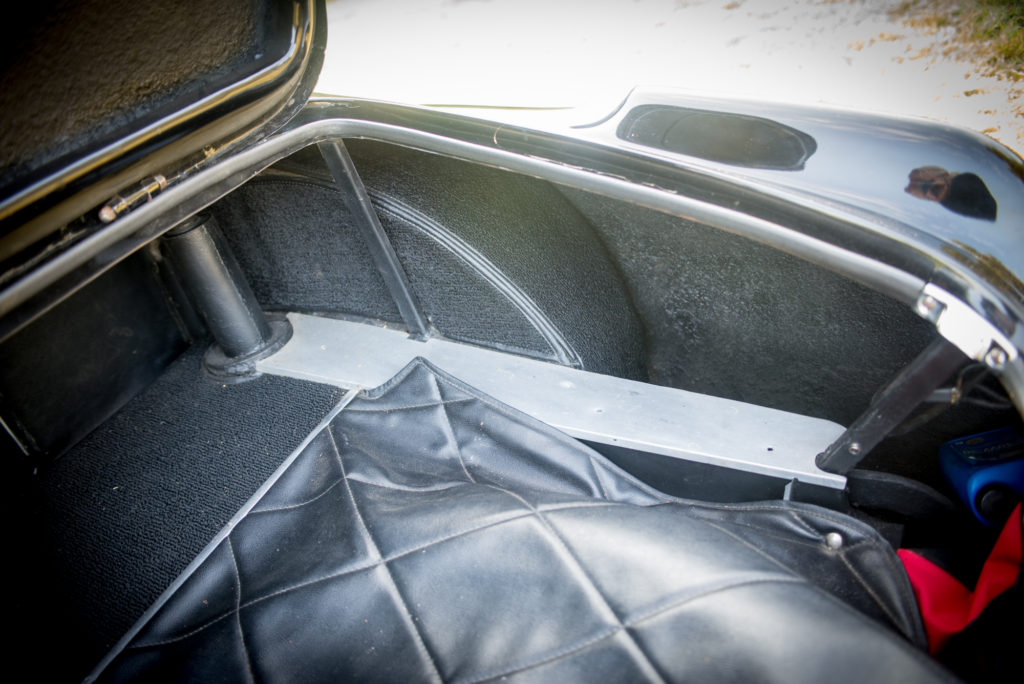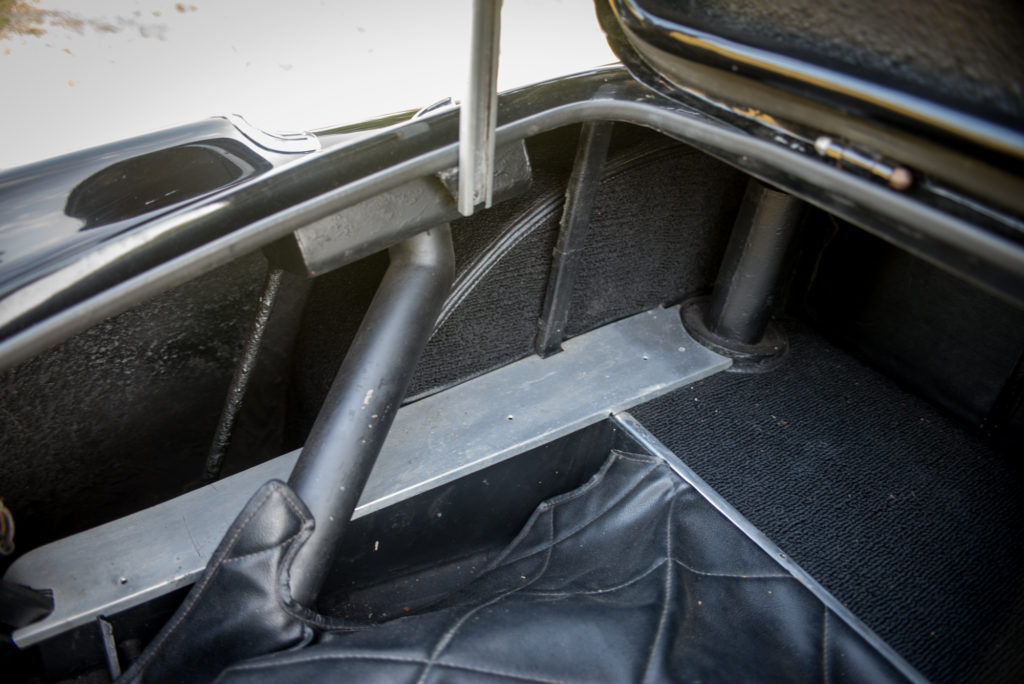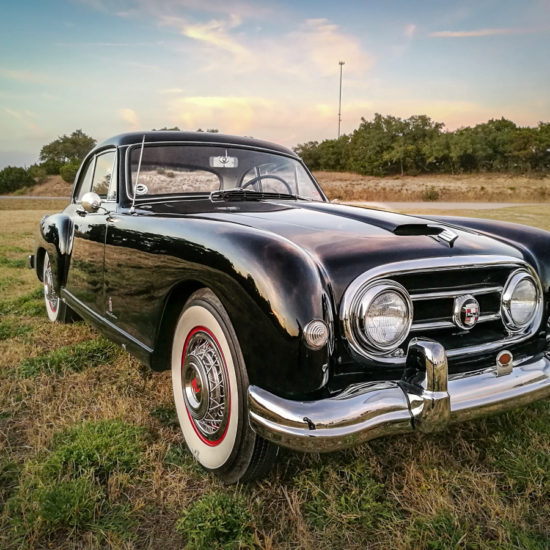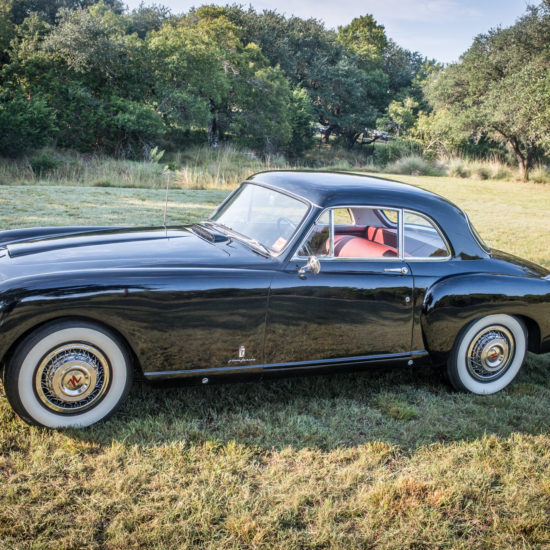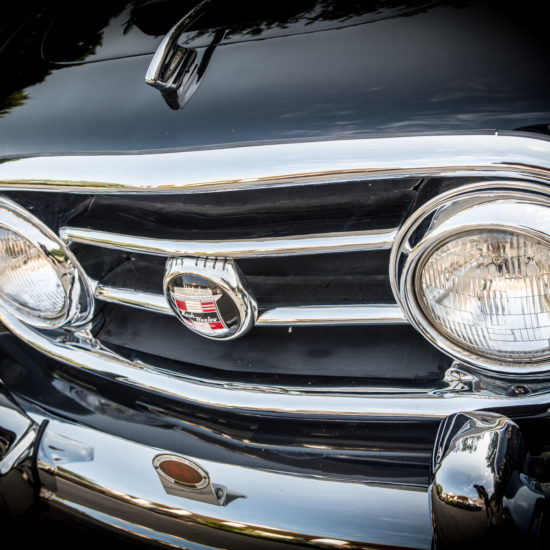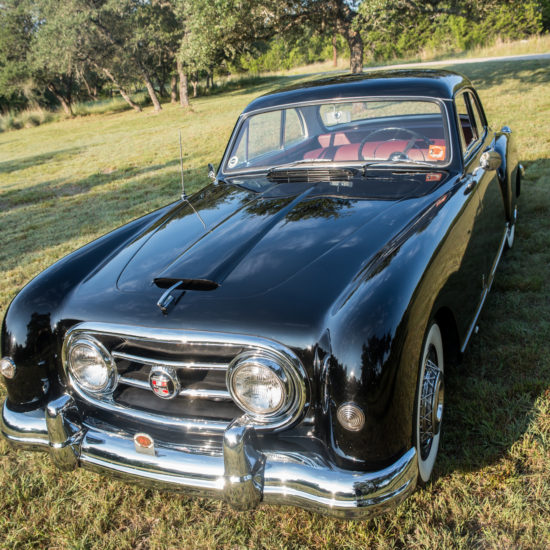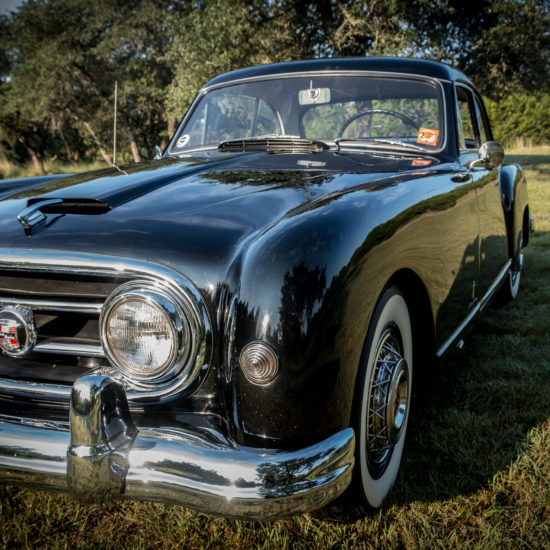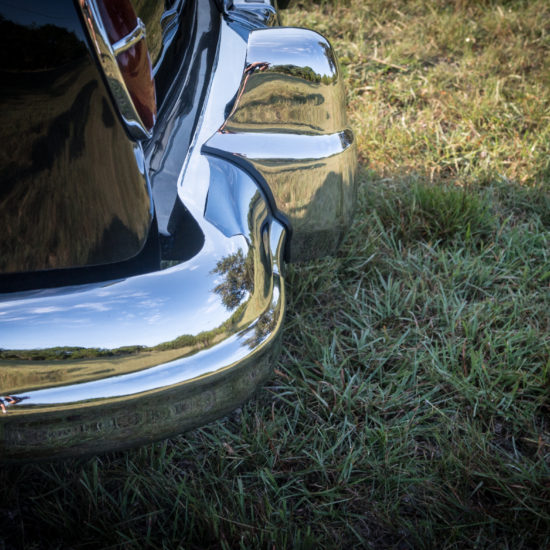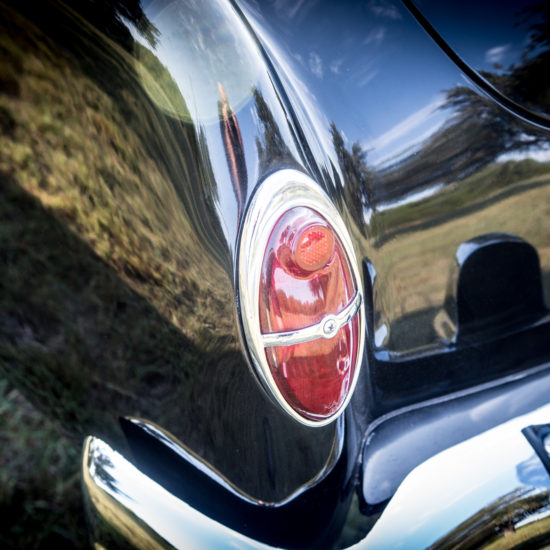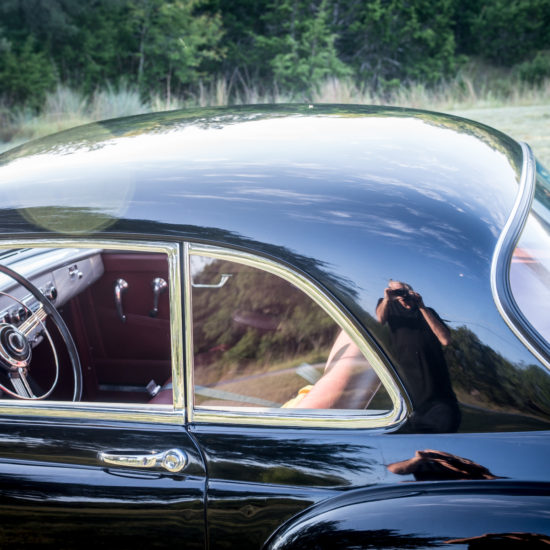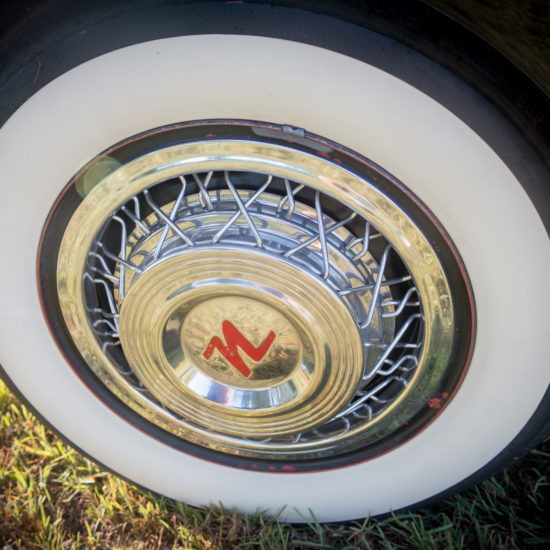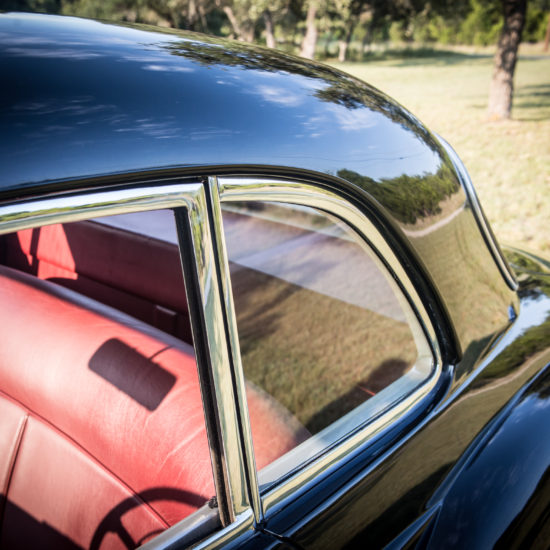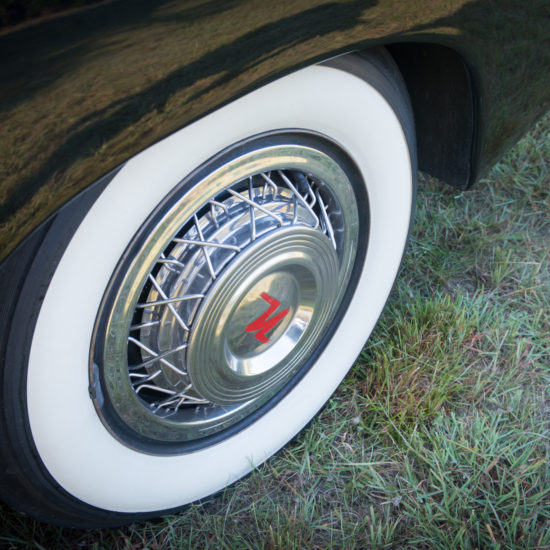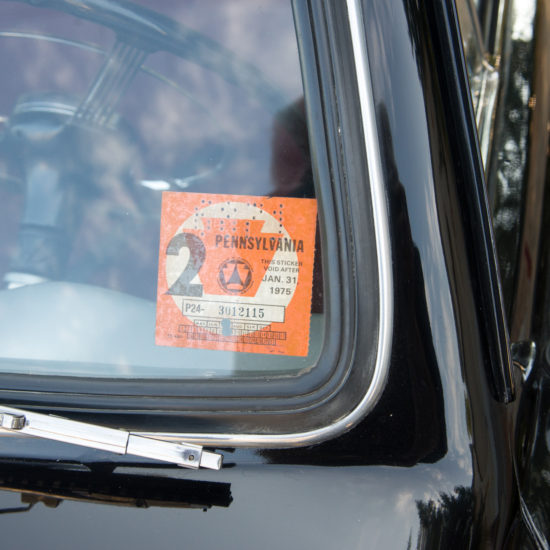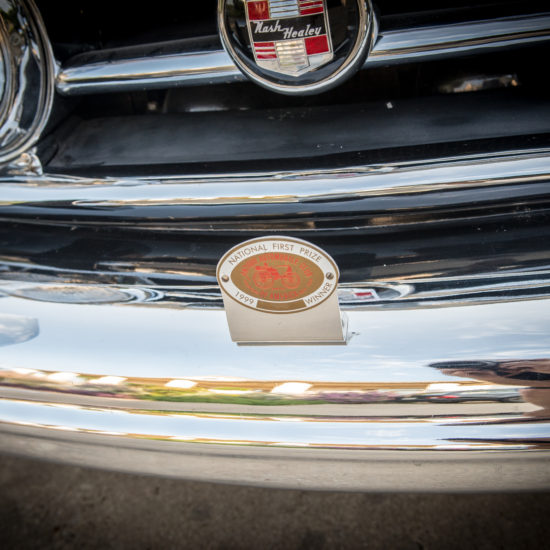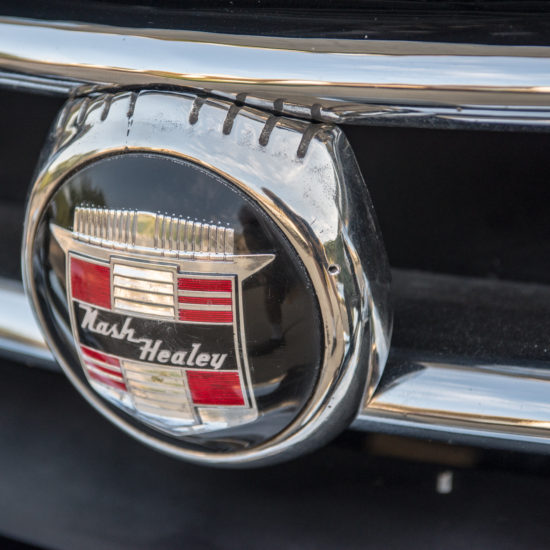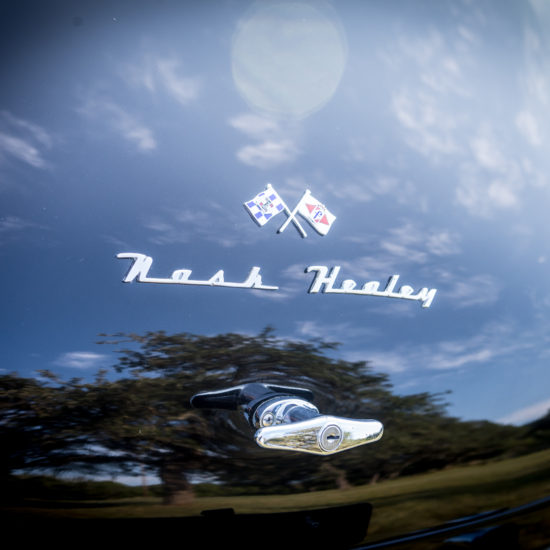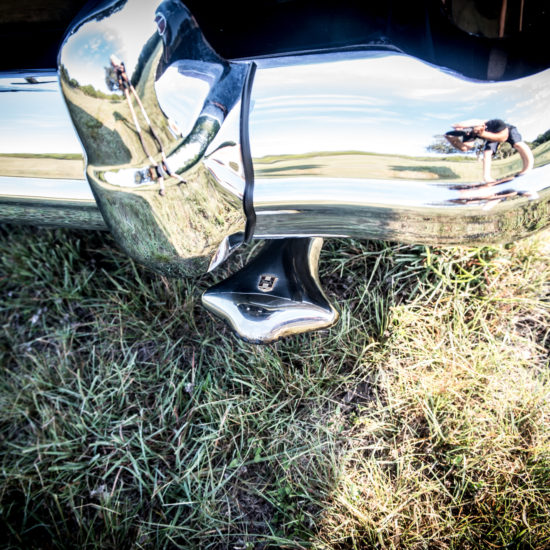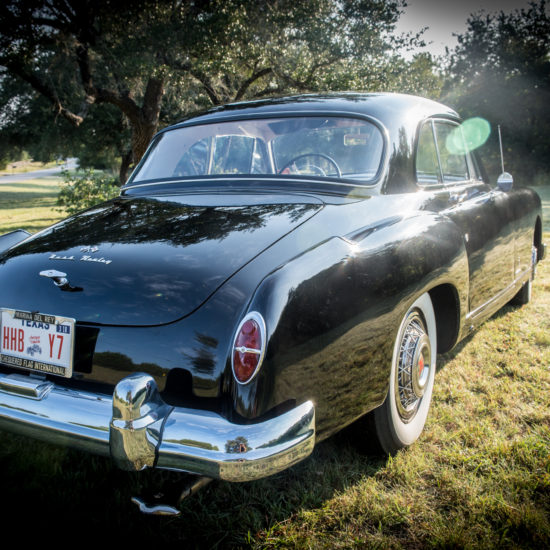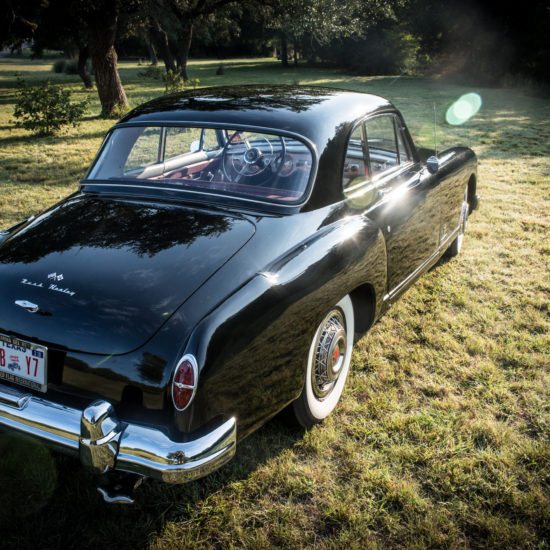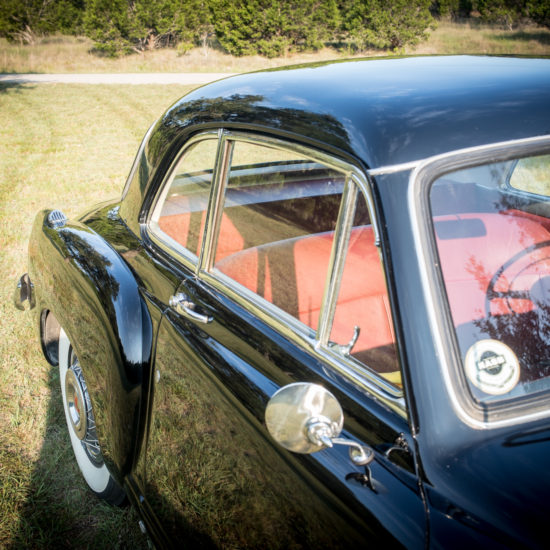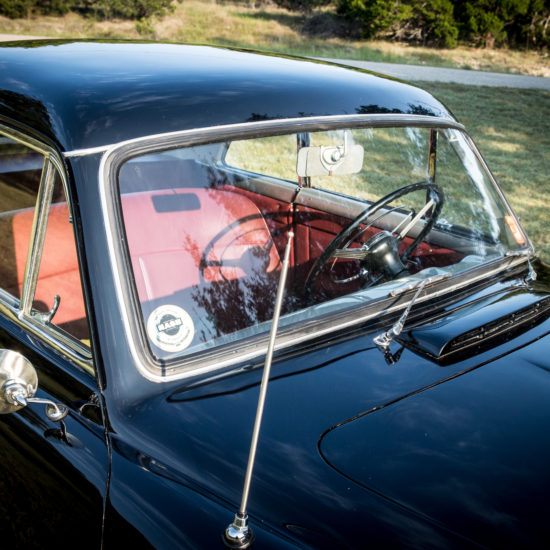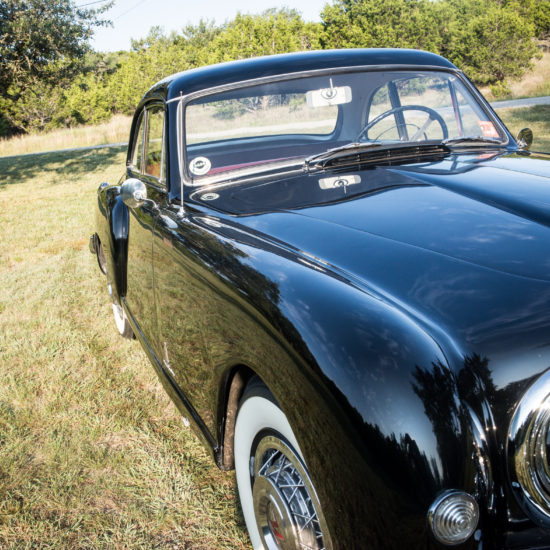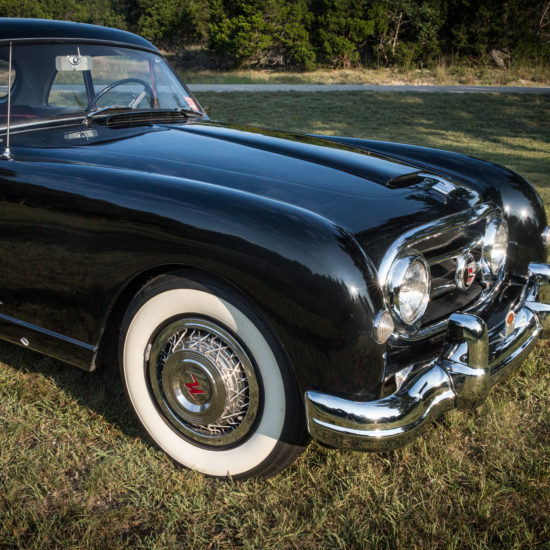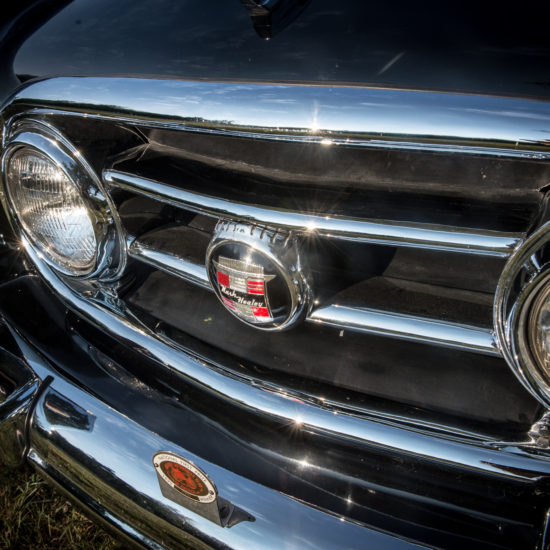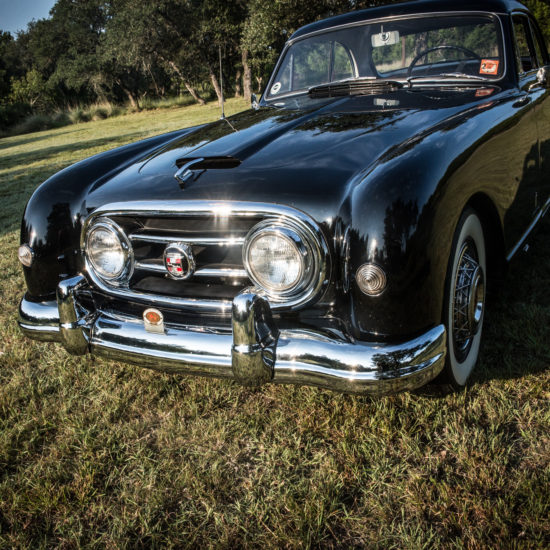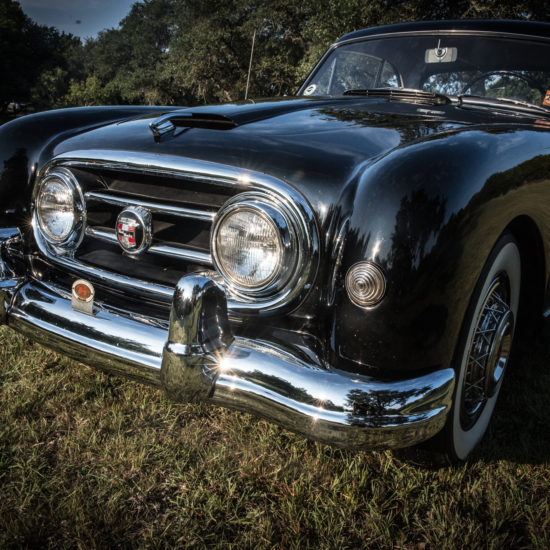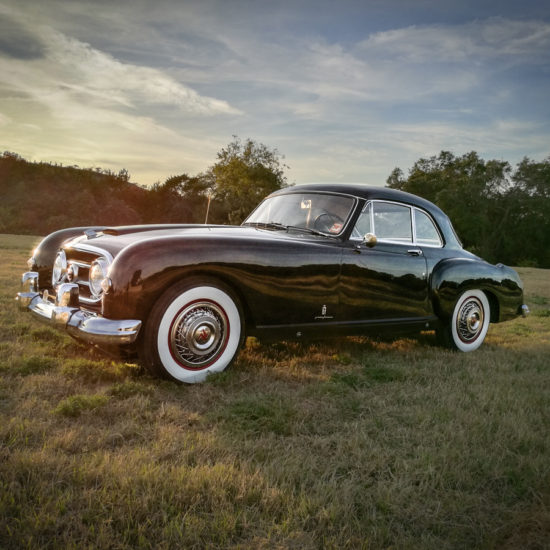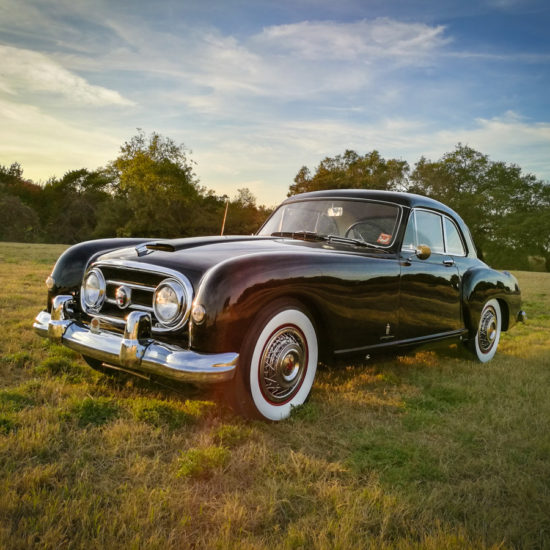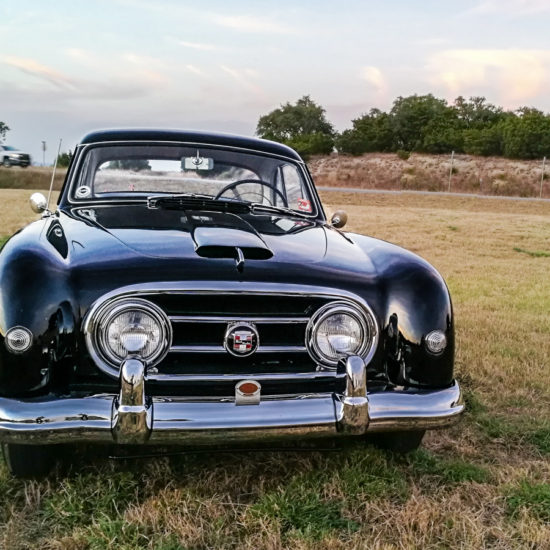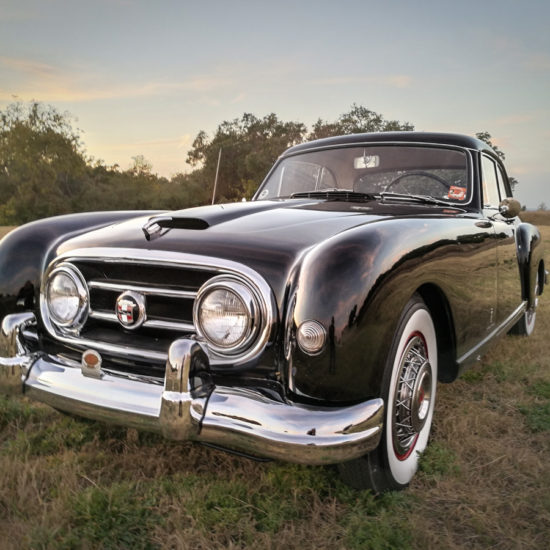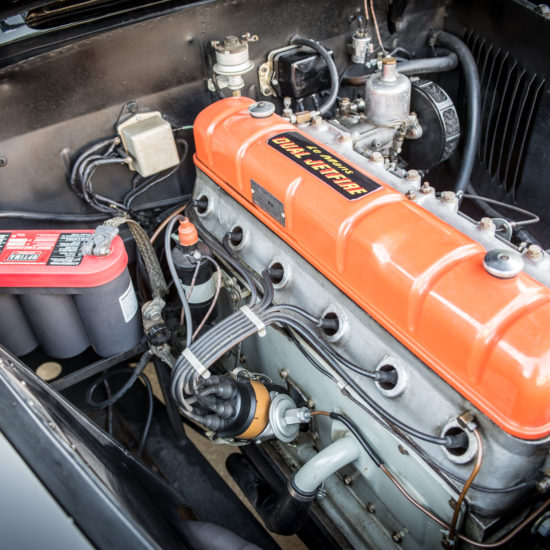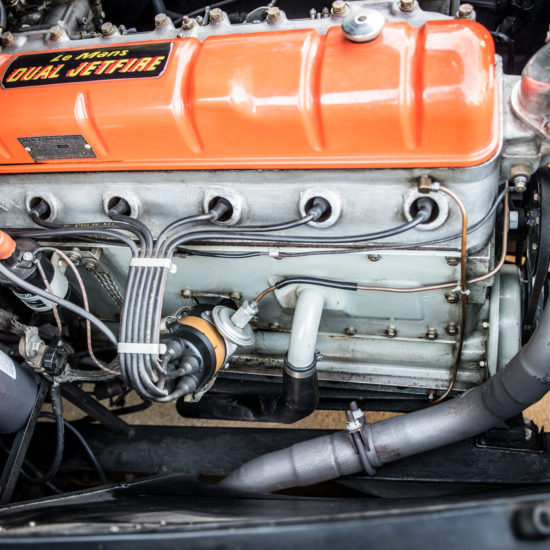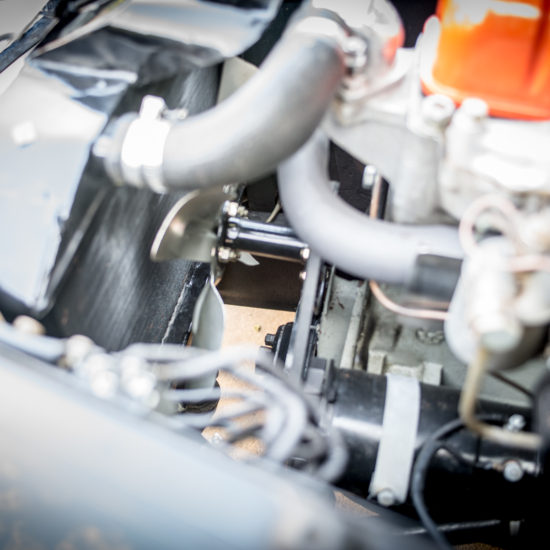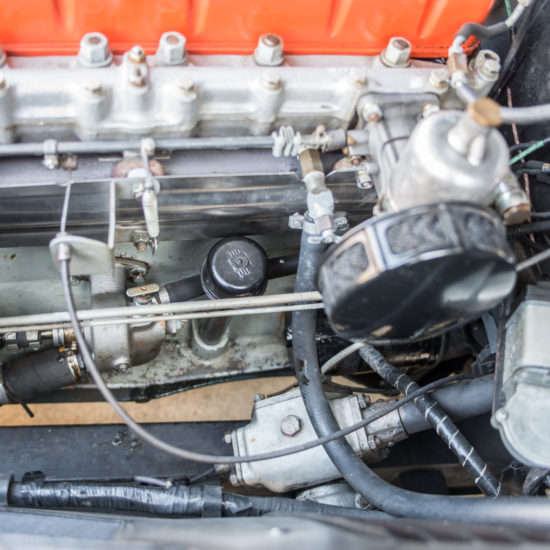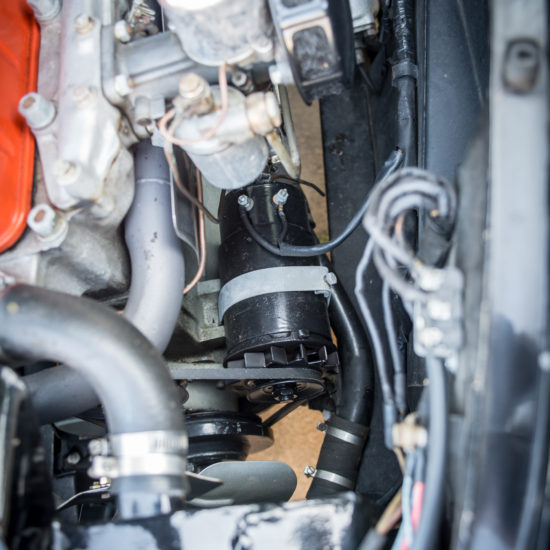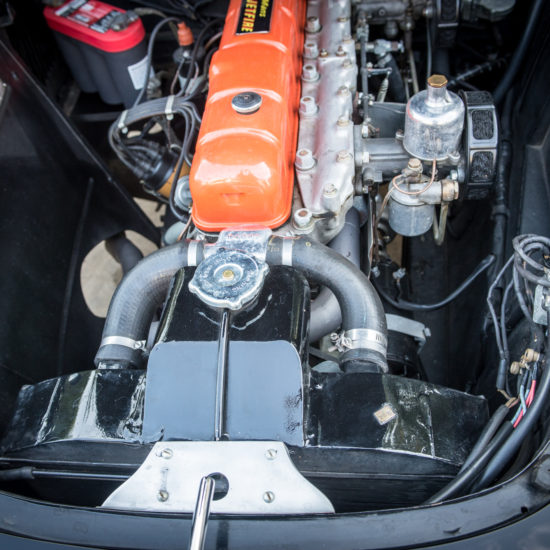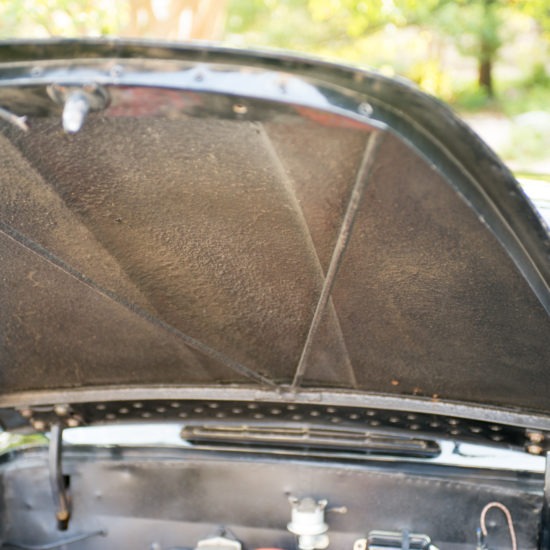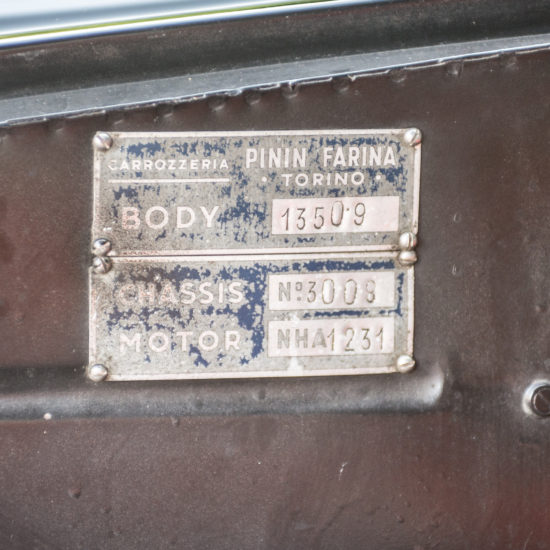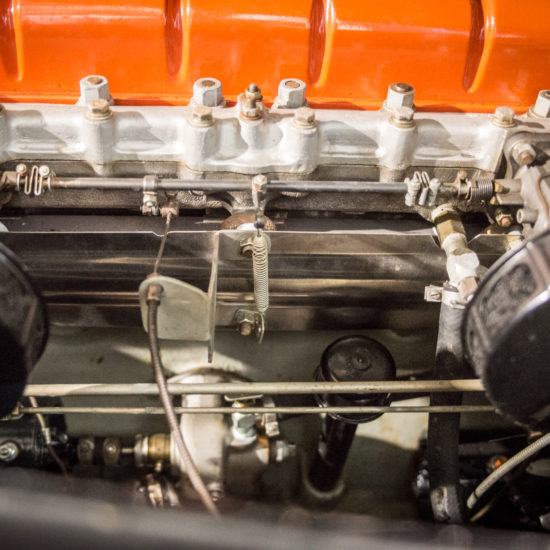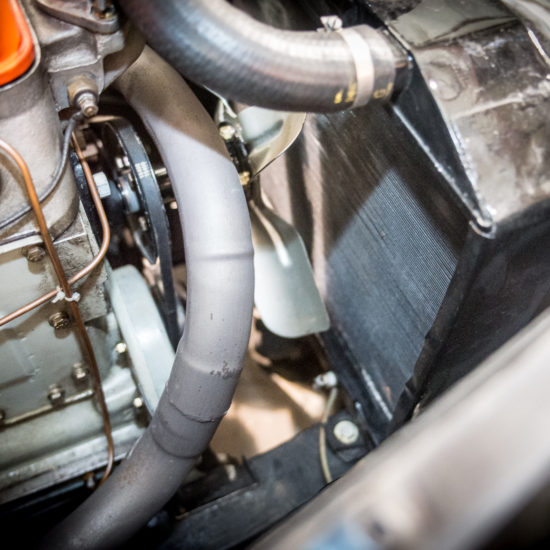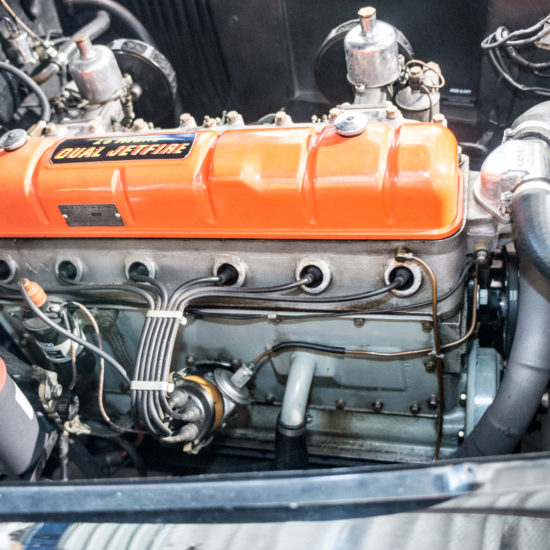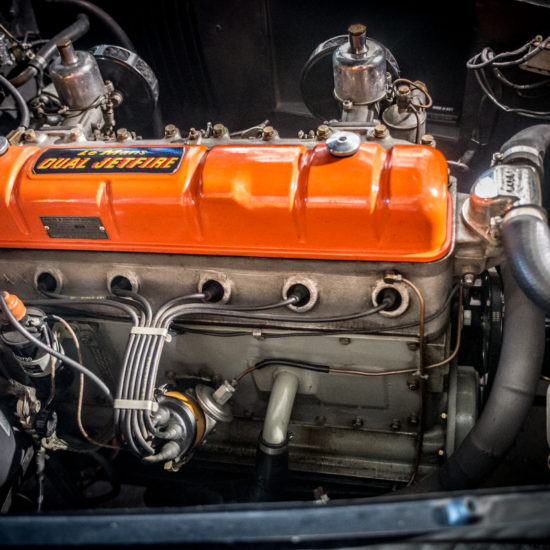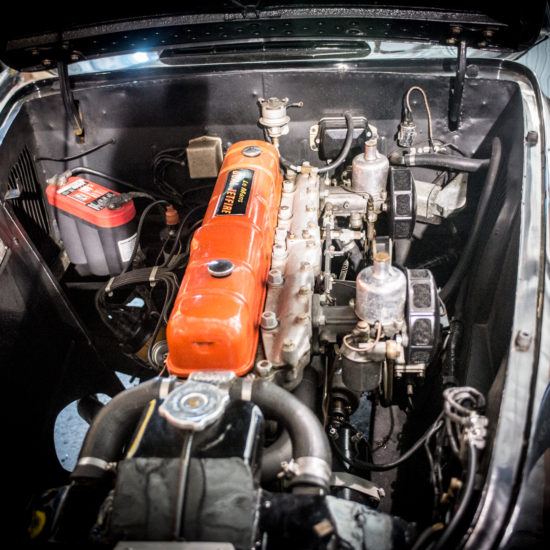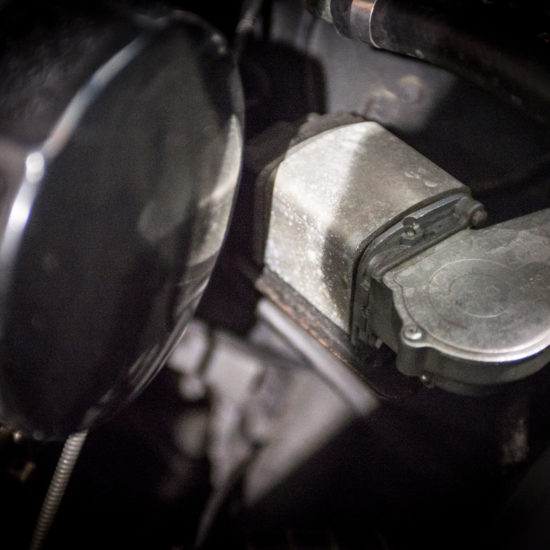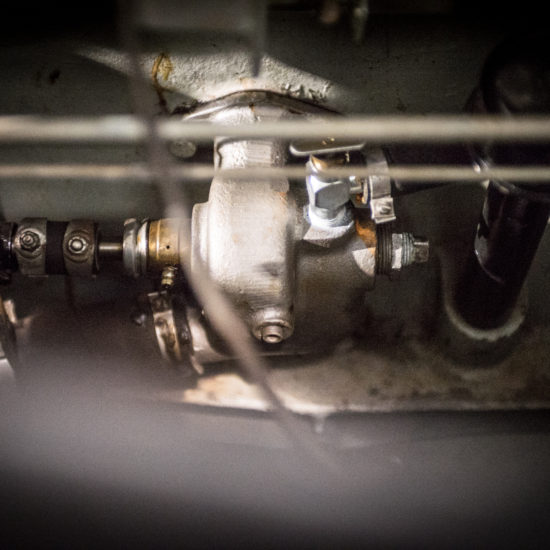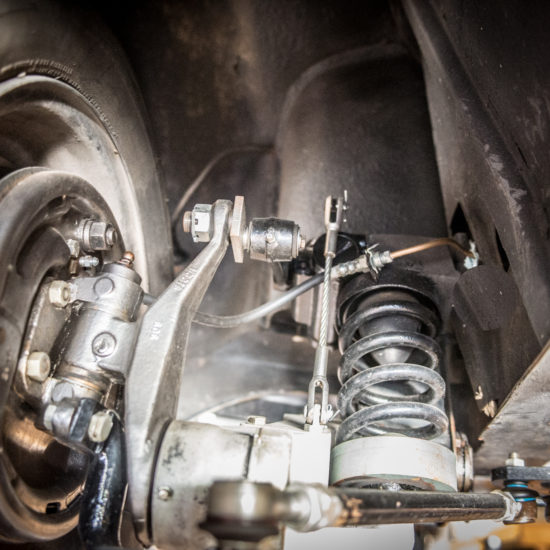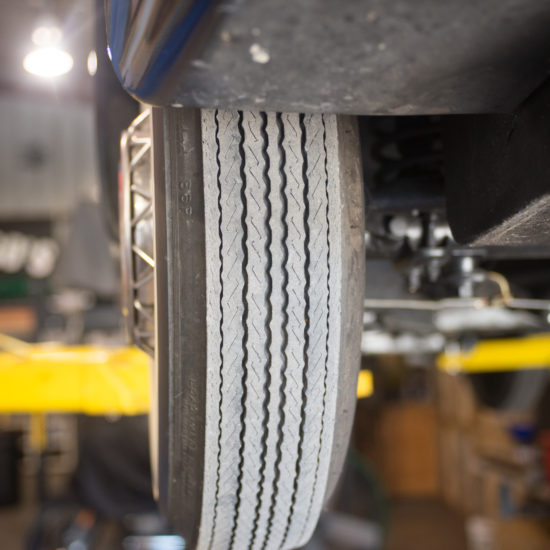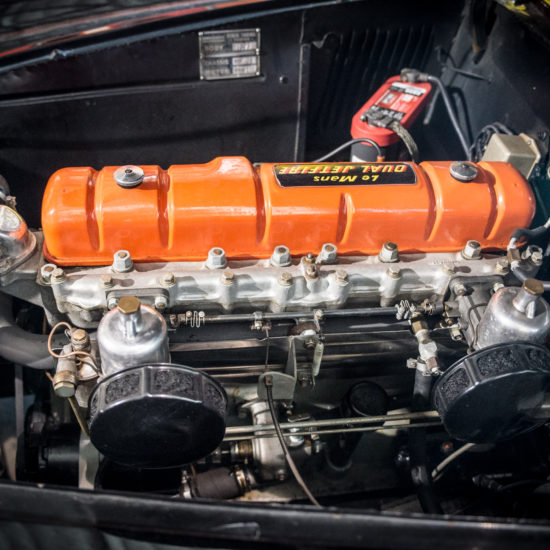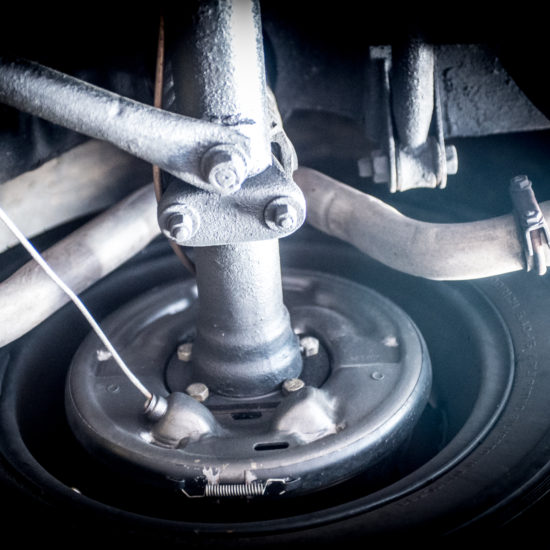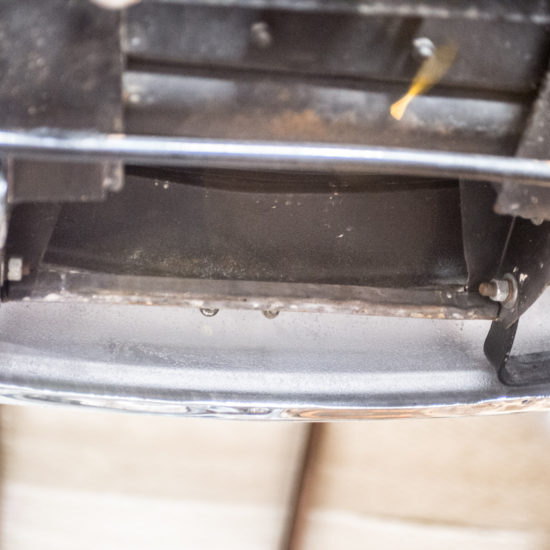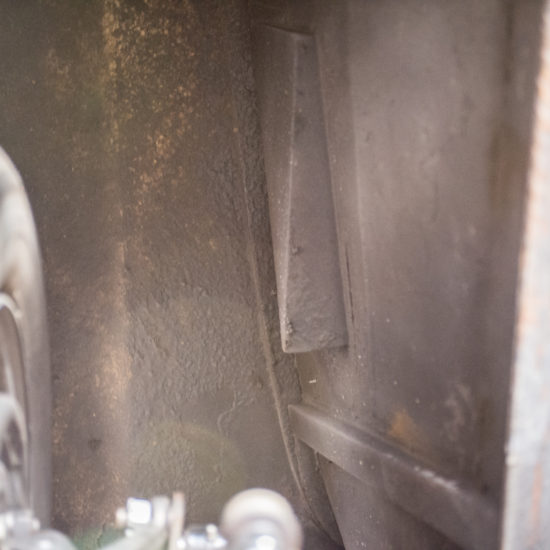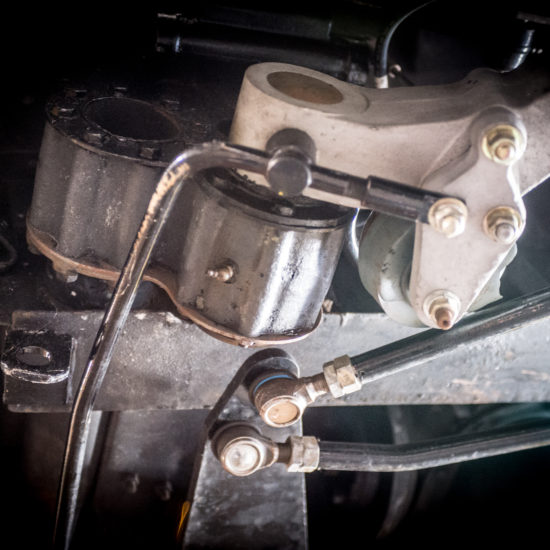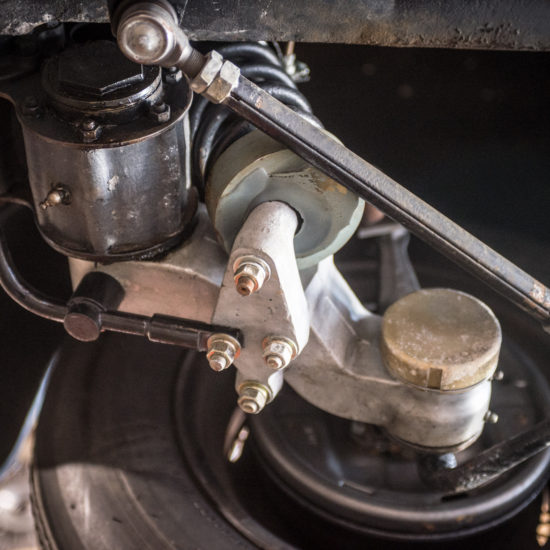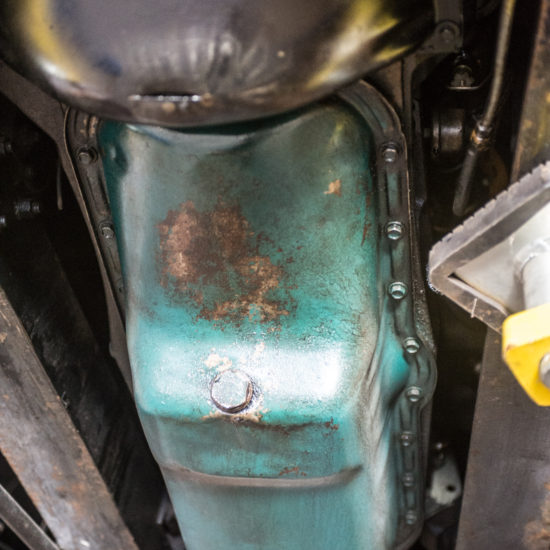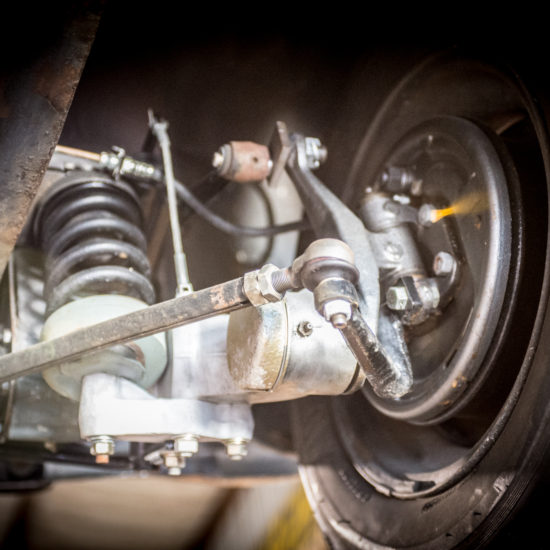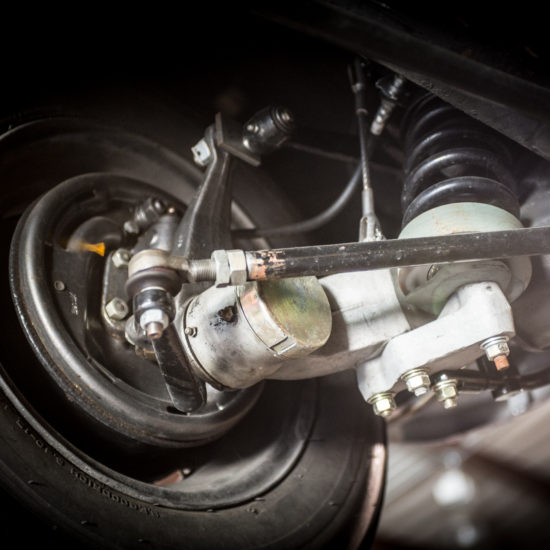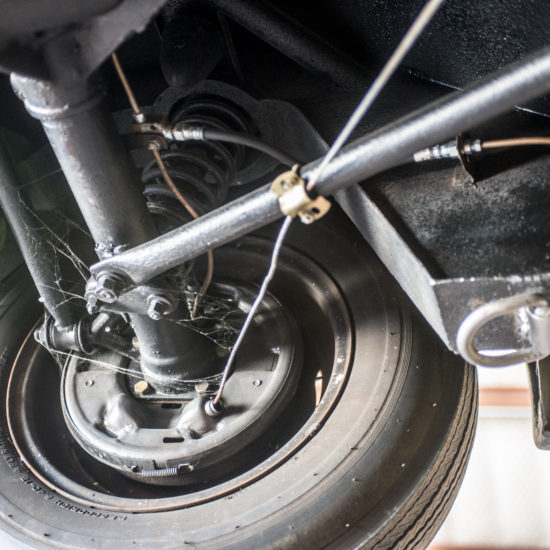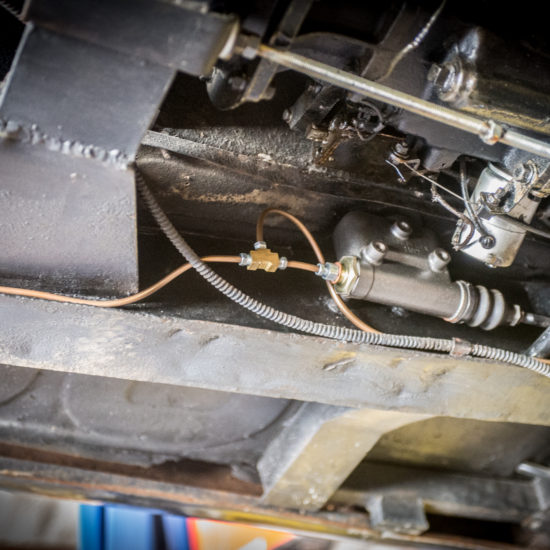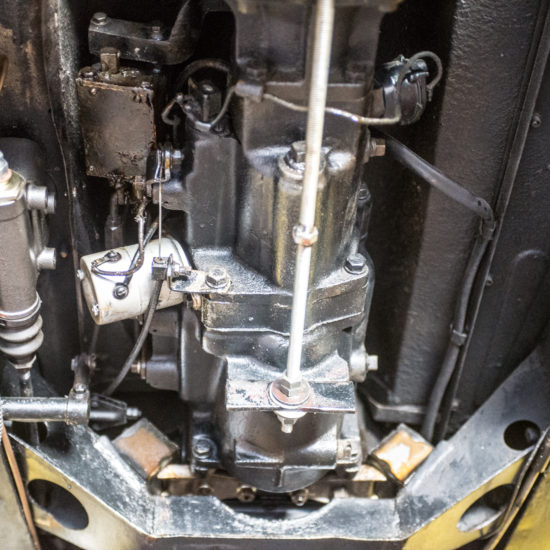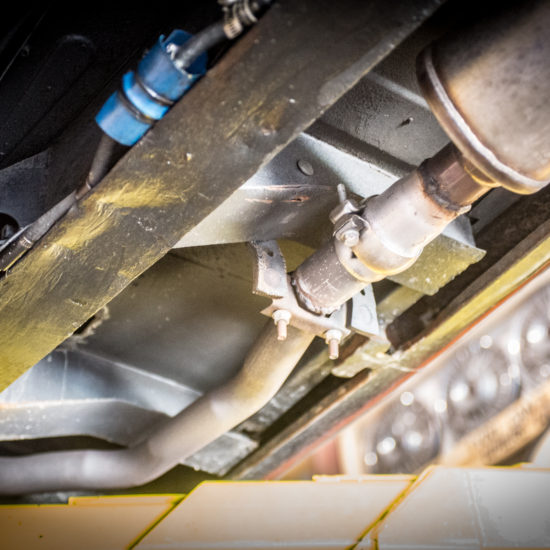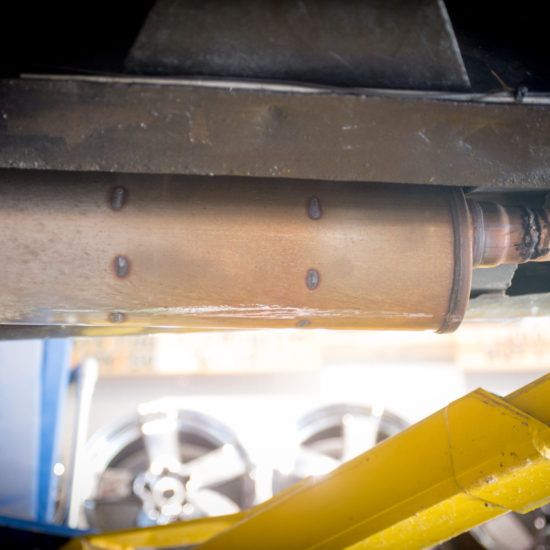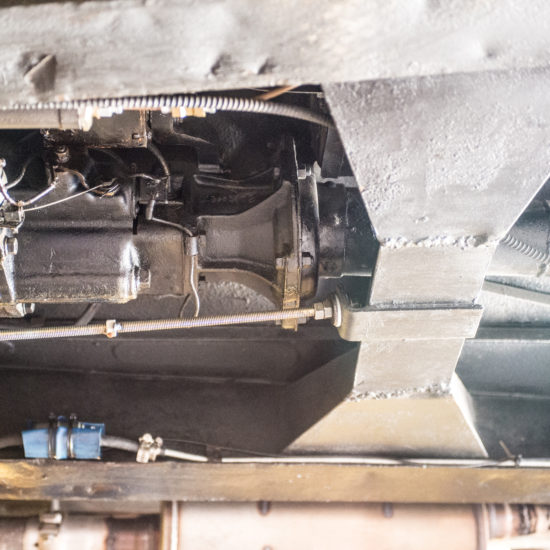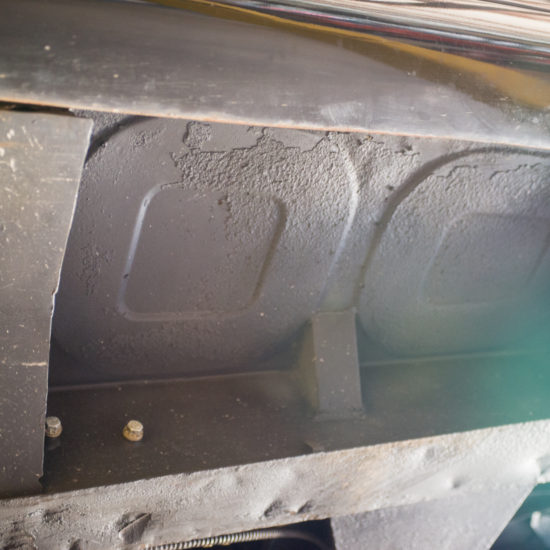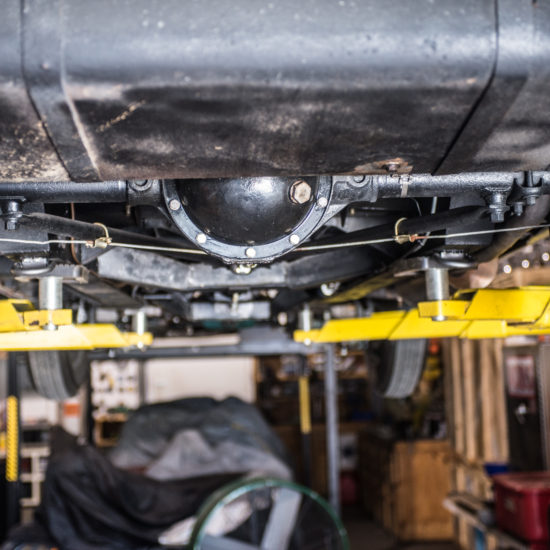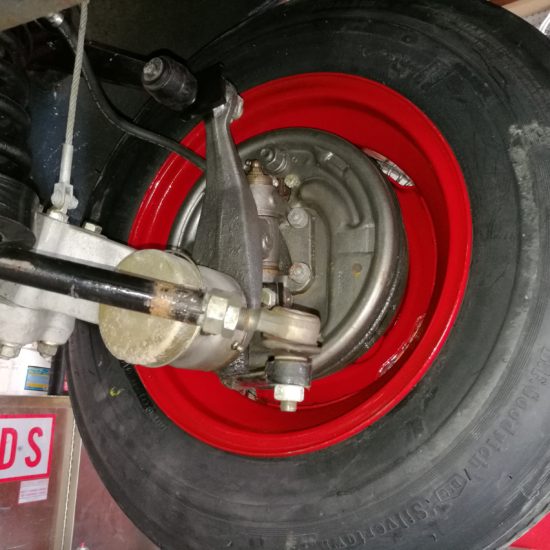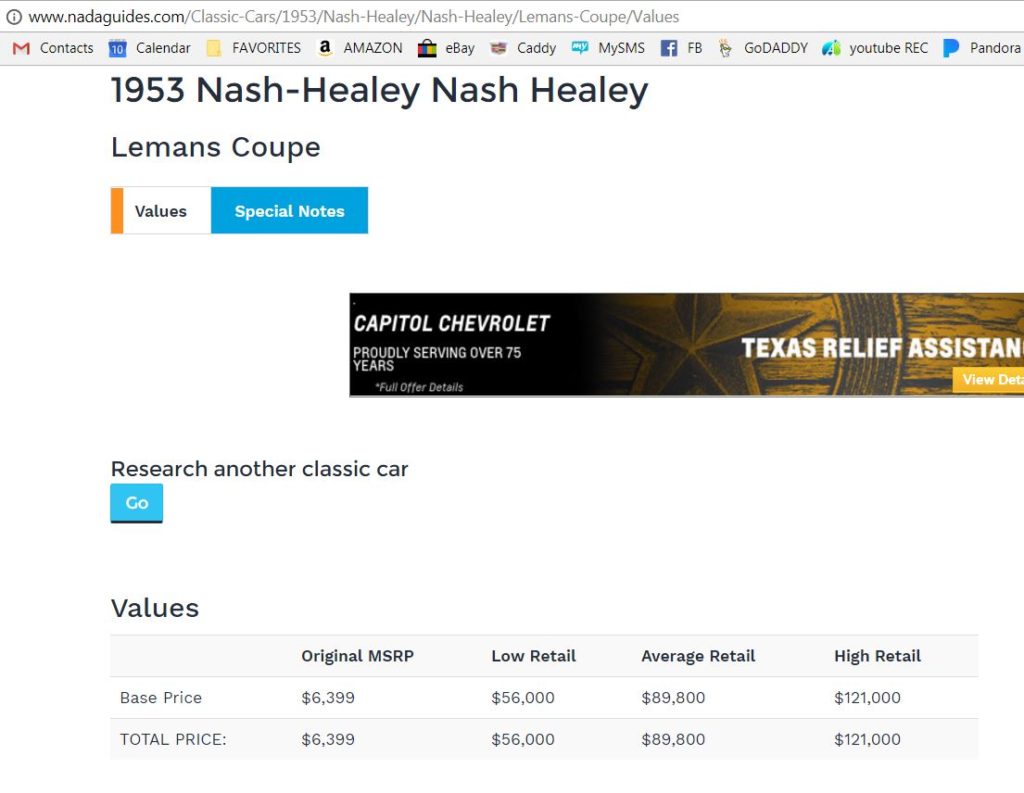$79,000
I searched for some 4 years before finally finding “Sabrina”, our 1953 Nash-Healey Lemans Coupe. And, the search was for good reason, as the 1953 coupe is extremely rare. Records estimate a mere 62 of this particular body were ever built, yet the Nash Healey registry currently only accounts for some 30 examples still known to currently be in existence.
That makes the LeMans coupe literally rarer than the holy grail of car collecting, the Ferrari 250 GTO, of which 39 examples were produced, one of which sold in 2013 for a reported whopping 52 million dollars!
Of course, the LeMans coupe is no Ferrari 250 GTO, yet it shares many similarities. It is powered by a bespoke engine with custom aluminum head and twin British SU carburetors (designed by Donald Healey of Austin-Healey fame). And, the body was hand built in the same Carrosserie Pinin Farina facility as many of the vintage Ferraris, including my all-time favorite, the Ferrari 275 GTB.
And, the similarities abound in the coachwork. Hand stitched leather interior, doors that shut with a “snick”, cast and polished door handles and pulls, Italianate painted dash, and those lovely Italian cable and pulley window winder mechanisms that function so smoothly.
Each body was individually hand-crafted at the Pininfarina facility in Cambiano, Italy. The roof itself consists of 6 separately-formed panels, carefully hand-welded together to form a strong structure. The remaining panels were similarly produced, and the entire assemblage was joined together in a single, seamless structure (save, of course, for the doors, bonnet, and boot lid). This resulted in a very strong and near-rattle-free body, which was then mounted on the beefy Donald Healey-designed and produced frame.
The frame and suspension were fabricated in Great Britain at the Healey facility. Although standard (and readily available) brake components sourced from the Nash parts bins (drums, cylinders, shoes, etc) were employed, Healey devised a cleaver and extremely strong front suspension, consisting of massive aluminum castings employed in a trailing arm fashion, to insure the front wheels always remained exactly perpendicular to the chassis.
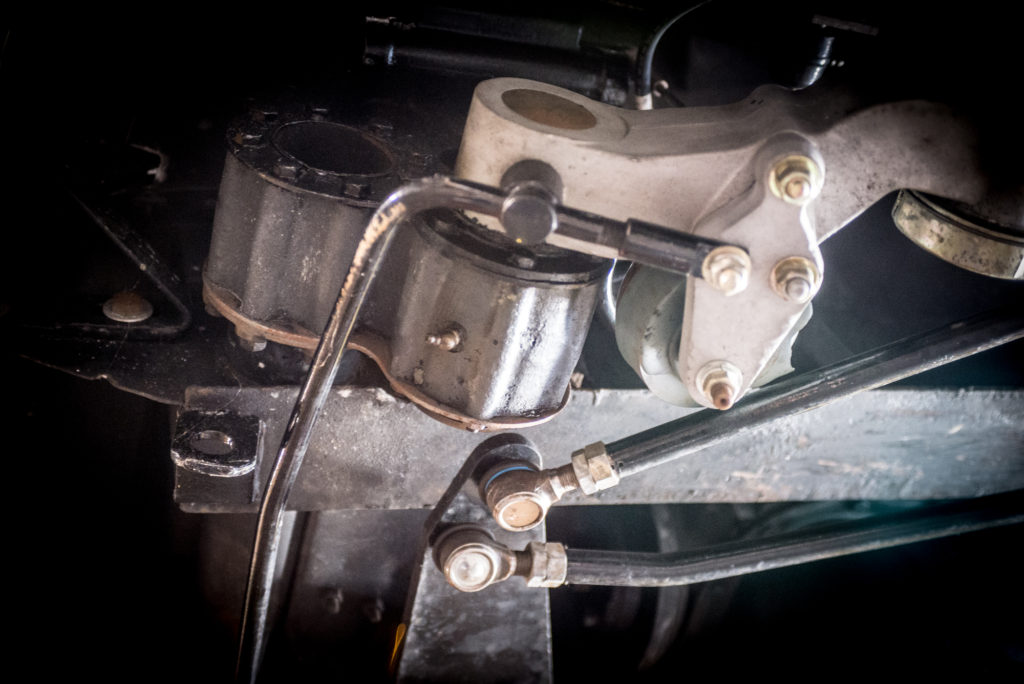
One notable difference (and advantage, to my taste), is that the LeMans, with its British fabricated chassis and Italian bodywork, features a robust, reliable American engine, with parts still readily and economically available.
The consortium between The Nash Motors Company and Donald Healey resulted in Nash providing the complete drive train, similar to those in their contemporary, top-of-the-line Ambassador automobiles. This 6 cylinder inline engine of 1953 displaced 4.1 liters, and generated 140 high-torque horsepower with the twin SU carburetors. Later vehicles were sold with a pair of side-draft Carter carburetors, I’m told as a cost cutting measure, and, in my opinion notably inferior to the simple and faultless SU carburetors (as well as beautiful, with their polished aluminum piston towers). I have 3 vehicles with SU carbs and have never had an issue with any of them.
The Nash drive package included the venerable and virtually bullet-proof Borg Warner manual transmission with overdrive in each gear, yielding a theoretical 6 forward speeds (high and low overdrive in each of the three gear sets), coupled with the sturdy torque-tube-style rear differential.
This combination was so powerful and reliable that a 1952 Nash Healey finished first in class and 3rd OVERALL in the 1952 Le Mans 24-hour race, beat out only by a pair of Mercedes factory 300SLs.
The Borg Warner overdrive transmission was used in many American vehicles in the ’50’s, including Hudson, Studebaker, Nash, and Ford, to name a few. All of these other implementations used a throttle “kickdown” switch to downshift from overdrive to standard gear. The driver shifted down by pressing the throttle all the way to the floor.
The Nash Healey employed a different technique, and one I love: the “kickdown” switch is actually a button in the center of the horn ring, readily at hand to the driver, and a mere tap on that button causes the transmission to shift down, without needing to go to full throttle.
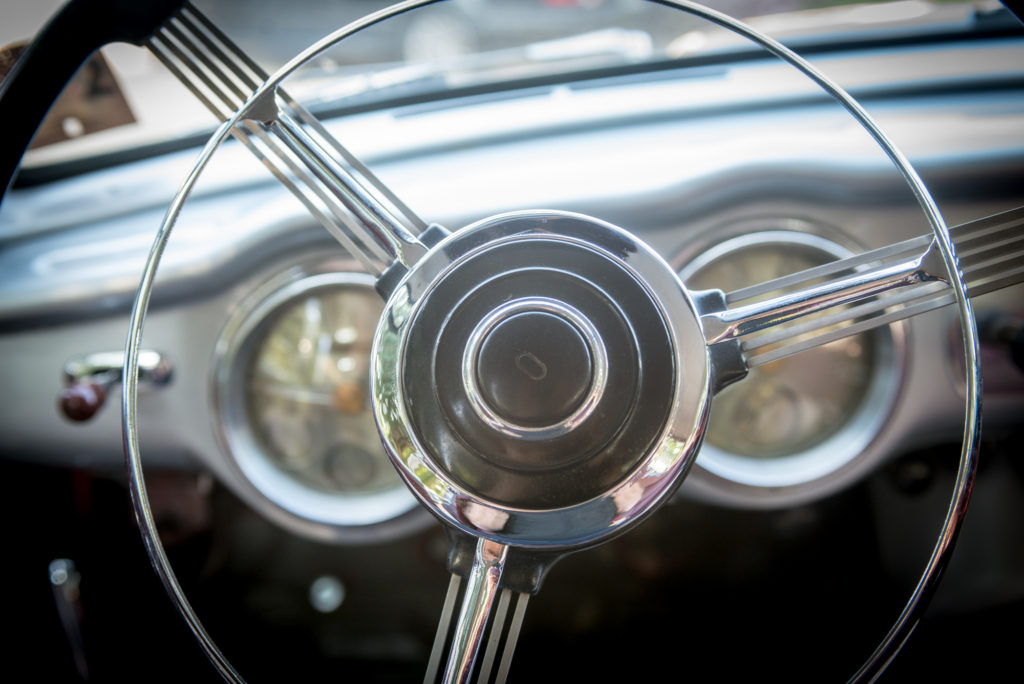
To shift back into the higher overdrive gearing, the driver need only lift pressure off the accelerator pedal for a second, and the transmission automatically “upshifts”. It is like having a manual and automatic transmission at the same time!
The best part of the Borg Warner system is its simplicity and reliability. Just a relay, a kickdown switch, and a shifting solenoid make up the entire mechanism, and it rarely ever fails, and is easy to maintain.
This particular example is an unaltered, original numbers-matching vehicle.
- Body # 13509
- Engine # NHA1231
- Chassis # 300
Note that most every individual part of the body was stamped at the factory with the “509” suffix of the body number, authenticating its originality.
I was fortunate to acquire this car from its original owner (since new), via intermediate brokers. I have been told that the 59,000+ miles is original total mileage.
The car won first in class in the 1999 National AACA meet, and in fact still displays the medallion on the front bumper.
The car actually was displayed in a museum for some 12 years before being auctioned at Mecum in Florida (where it lived) in 2012 for the sum of $80,000 (plus buyer’s premium), the auction results listing is copied below, and is still online at: https://www.mecum.com/lots/FL0112-121086/ (although you have to register with your email address to view the prices):
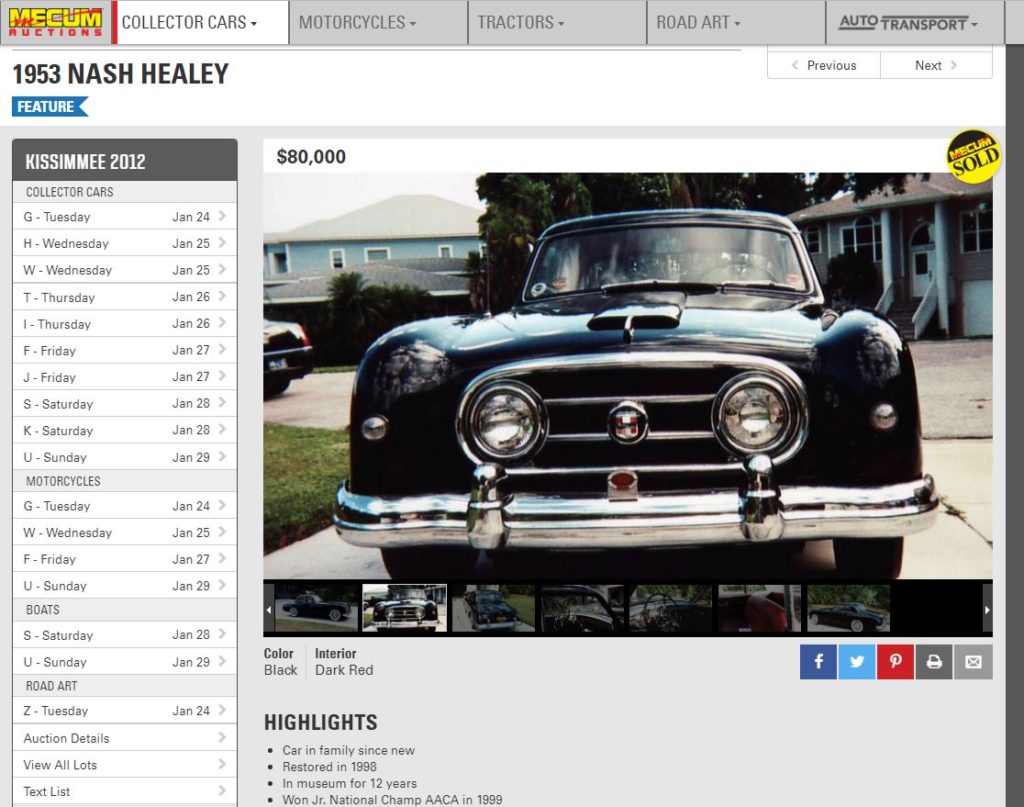
Although the car came to me right from its 12 year sojourn in a museum, it had some mechanical issues, and the chrome was all less than perfect.
My first task was to remove ALL the exterior chrome.. full window frames, bumpers, bumperettes, entire front grill and badges, and have them triple chrome plated.
Then I turned my attention to mechanical issues. Both the front and rear motor/transmission mounts were shot, allowing the clutch to “judder” on takeup (A common issue with these torque tube configurations). All these were replaced (the rear transmission mounts are no longer available, but I found a source that could bond new rubber to my existing metal backing plates).
Next, the brakes got my attention: I had all four drums turned, and installed all new alloy non-rusting brake lines (no, not aluminum or copper!), brake master and slave cylinders, and new hoses.
I then discovered a cracked spring perch on the front suspension, so I completely disassembled the suspension components on both sides. I installed new machined-from-billet spring perches, new stainless extended caster adjusters (well over $1,000 for these two items alone), replaced all the bearings and bushings in the swing arm and other components, refurbished the lever shocks, and installed all new tie-rod ends, making the steering tight and precise.
Next the engine got a complete physical refurbishment, including commissioning of a custom fabricated stainless heat shield for the carburetors, to negate hot weather fuel vaporization.
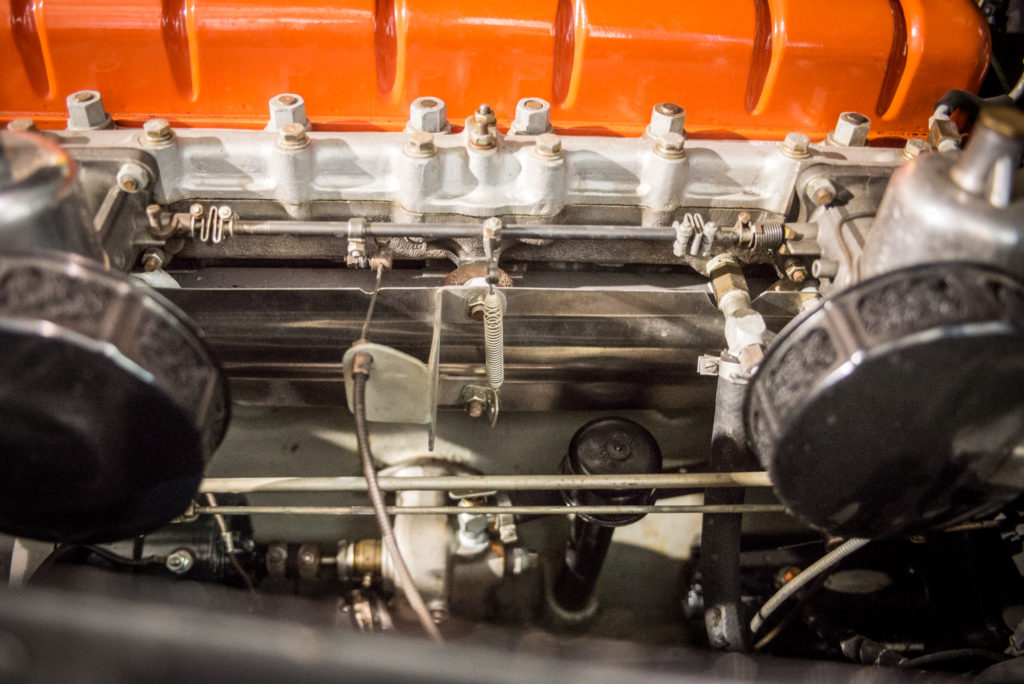
With the front grill out for plating, it was a perfect time to replace the headlight and turn signal wiring with OEM-style cloth covered harness:
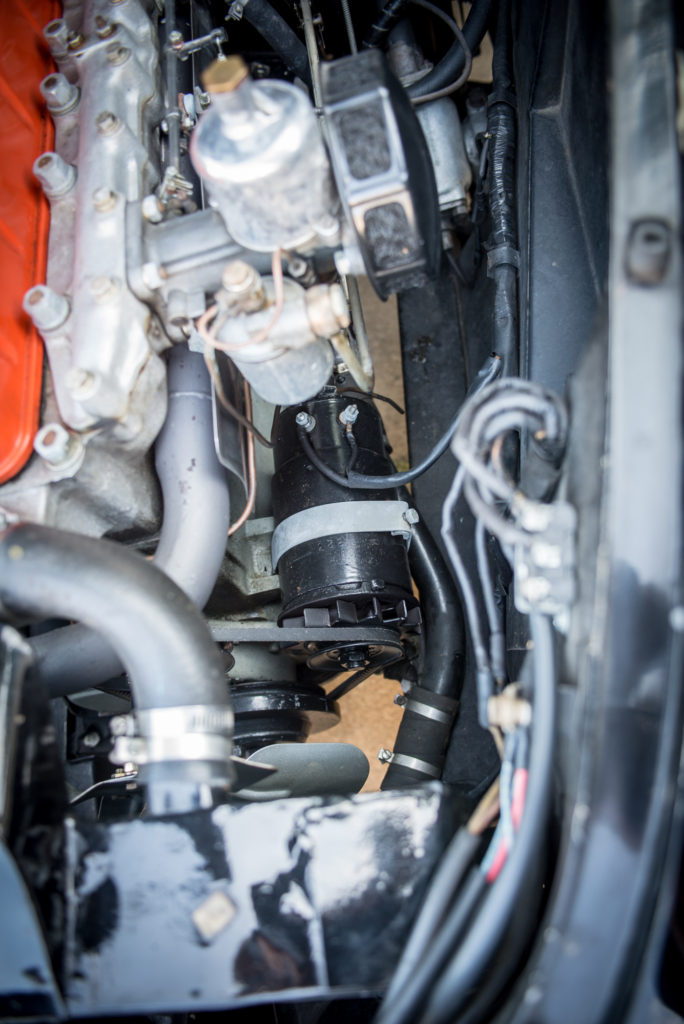
The car then received a rebuilt starter with new starter switch, refurbished generator and regulator, and rebuilt water pump, as well as all new radiator hoses and thermostat.
I removed the original (and beautiful) radiator, had a shop rod out the individual tubes, and test it for flow and leaks before reinstalling.
The entire exhaust system is near new, including special exhaust manifold gaskets from Olson’s, and a stainless muffler.
Car Condition
INTERIOR
The interior of this car is very near condition 10. The grey wool unblemished carpeting is edged in red to match the beautiful, soft, supple red leather seats, door panels and rear package tray. All the metal interior surfaces (dash and window trim) have been resprayed in what I believe to be the original silver/gray paint, and is in beautiful condition.
All the rubber trim is in great condition as well.
The door jamb threshold plates are likewise in beautiful condition, and each door shuts like a bank vault (or like a Ferrari!)
The metal decorative plate around the radio and switch gear is in beautiful condition.
Amazingly, the stock AM radio still functions perfectly, as long as you don’t mind listening to right-wing talk shows!
As well, the instrument binnacles are in beautiful condition:
All the controls and instruments function as new, including the “weather eye” heater temperature control, gas gauge, oil pressure gauge, coolant temperature, speedometer, tachometer, and vacuum gauge. (Note.. on occasion I have found the electrically driven tachometer to be “lazy” on cold start up.. sometimes it doesn’t spring into action until the engine has warmed up).
All the lights, turn signals, heater fan, cigarette lighter, work perfectly.
Please take a few moments to view all of the interior pictures (click on each picture below for a high resolution version (then PRESS ESCAPE to RETURN BACK TO THIS PAGE)
TRUNK (BOOT AREA)
This area is as delivered from the factory, with quilted spare tire cover and carpeted wheel wells. The original aluminum sill covers are still in place and in beautiful condition. Of course, the proper spare tire and wheel are provided with the vehicle.
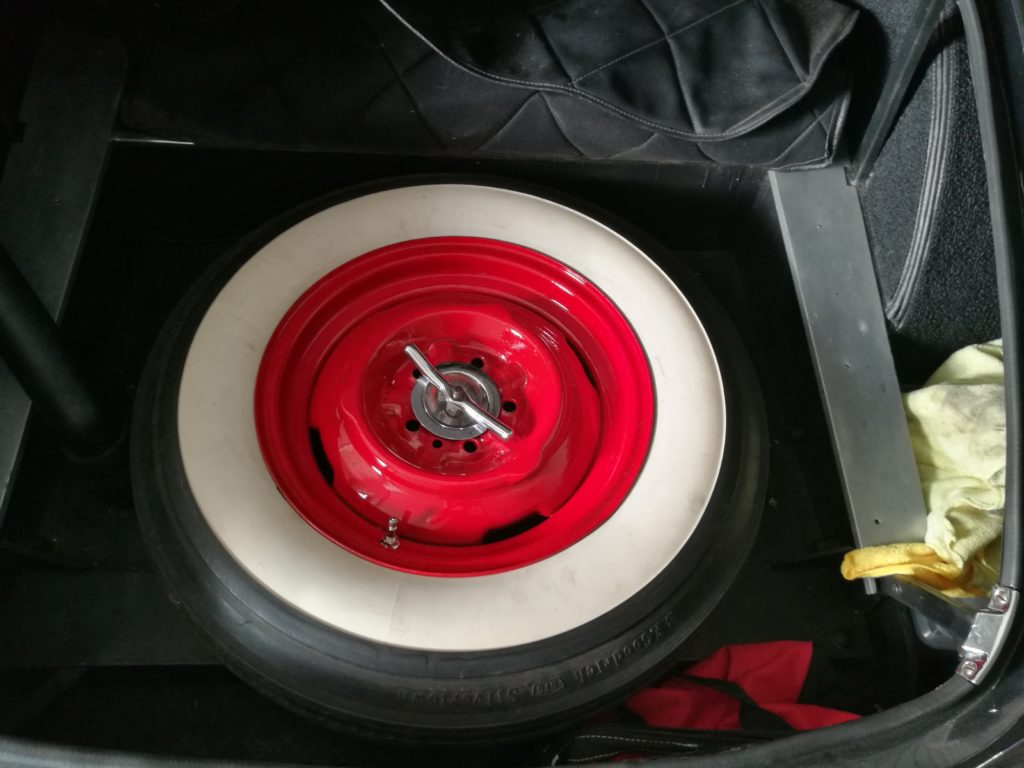
EXTERIOR
There is no evidence of rust anywhere on the car, either at the body, floor pan, or along the frame. I do not see any evidence of any repair or replacement of metal ever needing be done.
As previously mentioned, all bright work on the car was removed and replated during the course of my ownership (since 2012). The black exterior paint was obviously applied by a professional restoration shop. The surface is mirror-smooth, and there is not a single evidence of overspray anywhere on the vehicle.
The car is stunning from any angle, and always draws a huge crowd wherever it goes.
The factory original “wire wheel” and center hubcaps are still installed on the car, and in beautiful condition.
That said, the paint is of indeterminate age, and is beginning to show that age. While 98% of the painted surface is beautiful, there are a few areas along seams where the paint is starting to lift a bit (I am virtually certain there is no rust underneath, it is likely the result of poor preparation along those seams), as shown on this one example (on none of these areas has the paint actually peeled away):
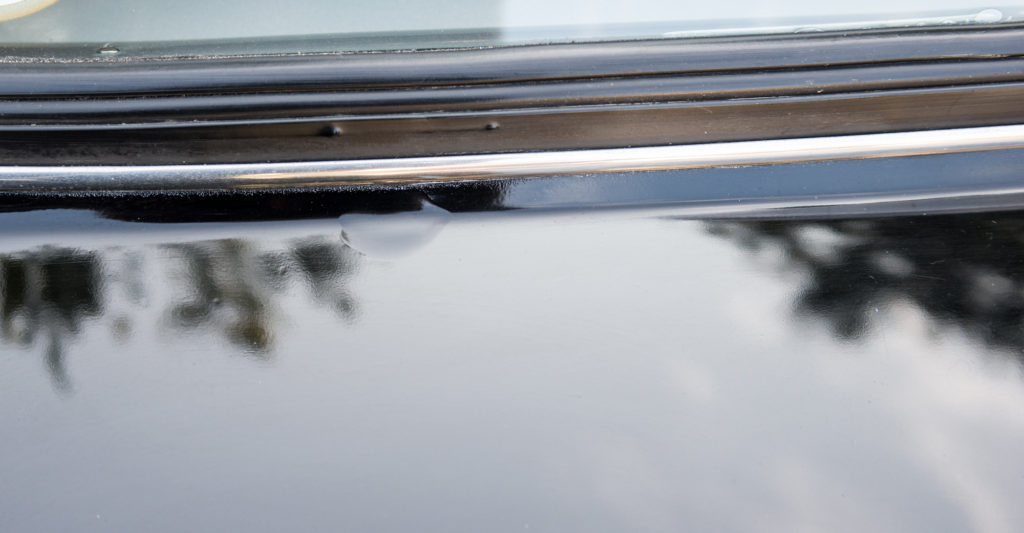
Please take a few moments to review all the exterior photos below. Note: all the wheels (including spare) have been dismounted, stripped, epoxy primed, and painted a beautiful maroon color matching the interior. Many of these photos were taken just prior to the painting. The following photo depicts the current, correct wheel color:
Just click on any desired image to see the high resolution version (then PRESS ESCAPE to RETURN BACK TO THIS PAGE):
MECHANICAL / OPERATIONAL
The bullet-proof Ambassador 6 cylinder engine has an amazing amount of torque, and can easily propel the light car along at speeds in excess of 100 mph. Thanks to the overdrive transmission, the engine is loafing at a leisurely 2,500 RPM at 70 mph indicated (I have checked the accuracy of the speedometer, and finds it reads an optimistic 7-8% higher than actual road speed).
These cars employed a trouble-free direct starter switch located underneath the clutch. You just press the clutch all the way to the floor,a bit harder than normal, and the switch underneath activates the starter. What could be simpler?
The engine always starts readily from cold, even when the car has been garaged for multiple weeks (It does take 8-10 seconds of cranking from dead cold, presumably to allow the mechanical fuel pump time to replenish the fuel bowls.. afterward, a warm engine always starts immediately). And just as soon as the oil warms up it is ready to go. Oil consumption is negligible, and leaks are minimal. Oil consumption is negligible, and oil leaks are limited to the occasional drip characteristic of any car of this vintage.
The engine runs cool. Even in torrid Texas August summers, I have never seen the temperature gauge move beyond the upper edge of the center “normal” range (rare for cars of this age)
Acceleration from idle to max rpm is steady and without hiccup.
The Borg Warner transmission shifts smoothly and precisely, and there is no gear nor bearing noise to be heard.
The overdrive unit functions perfectly, shifting into and out of overdrive in each gear with the press of a button (engage) or lifting of the accelerator pedal (disengage).
Steering, although not power boosted, is surprisingly light, thanks to the huge steering wheel, and the original-style bias ply tires. Thanks to the extensive rebuild of the entire front suspension, steering is precise and without slop. And, due to the extended caster adjusters installed, the car tracks straight down the road, and does not wander as was the habit of the stock adjusters, which were seriously limited in caster adjustment range.
The brakes are smooth, fade-free, and balanced, with no hint of pulling to one side or another, and are very effective when a quick stop is needed.
The entire undercarriage is in beautiful condition, with much of the hardware replaced by new, and other components cleaned and properly coated or painted.
The wheels are currently being repainted and brand new whitewall tires will be fitted and balanced prior to delivery to the new owner.
Please take a few moments to review photos of the mechanicals in the gallery below. Click on any desired photo to see a full high resolution version (then PRESS ESCAPE to RETURN BACK TO THIS PAGE):
Discrepancies
- Slight lifting of paint at intersecting seams in several locations
Summary of Repairs or Replacements during my 5 year ownership
- Complete new brake system – master/slave cylinders, shoes, turned drums, and hoses
- Fully refurbished front suspension – new billet spring perches and camber adjusters – all new bearings and bushings, refurbished shocks – new tie rod ends
- Virtually every exterior trim piece has been newly triple chrome plated
- New exhaust system from engine to tailpipe
- Original radiator rodded out
- Reconditioned original radiator, all new hoses
- Rebuilt water pump
- Rebuilt starter with new Bendix, new battery cables and starter switch
- New high/low beam headlight switch
- New high capacity 6V battery
- Inline electric fuel pump to aid in cold start priming (switchable from hidden cockpit switch)
- New whitewall tires and freshly painted wheels
- Original AM radio functions perfectly
- Won first in class, AACA National Meet, 1999 (with bumper badge)
VALUATION
It is always difficult to assign a value to rare cars such as this. With so few cars offered for sale at any given time, one must look at historical values in relation to the general rise in most all classic car prices through the years. One respected reference is the NADA Blue Book guides for classic cars. Their most recent valuation for both 1953 and 1954 Le Mans Coupe shows Average Retail at $89,800, and High Retail at $121,000, as shown below:
Obviously, the value of a car such as this varies over a wide range, dependent, primarily on overall condition. As of this writing, the only Nash-Healey coupe to be found ANYWHERE for sale is a beater rust bucket at an East Coast dealer, missing many key under-bonnet components with an outrageous asking price of $49,500:
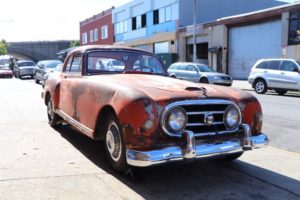
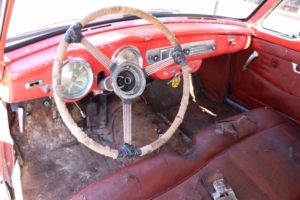
It is almost impossible to find one of these rare cars in the condition of this offered example, and it is certain to continue to appreciate in value. I can state without reservation that this car needs absolutely nothing except to be driven.
And, as previously discussed, this exact car sold in 2012 at Mecum auction in Florida for a hammer price of $80,000 plus buyer premium of 10%. Its physical and mechanical condition have been significantly improved in the ensuing 5 years.
The list of qualified vehicles for participation in the Italian Mille Miglia does include the Nash-Healey from 1951 – 1953, although it is unclear whether it is the roadster or coupe, or both, which qualify. In any case, this car will make an excellent candidate and be a welcomed participant in any number of vintage car rallies held around the US and in Europe.
I wouldn’t hesitate to hop in this car tomorrow and drive it to either coast, without worry.
The car will be delivered with a host of spares I have collected during my ownership, including original factory manuals as well as Nash mechanical manuals for reference. This car is always garaged in my facility in the Austin, Texas area. I am happy to arrange a buyer’s inspection and/or coordinate with a shipper (both at buyer’s expense)
Contact me with questions: Phil Auldridge 512 517-0055
